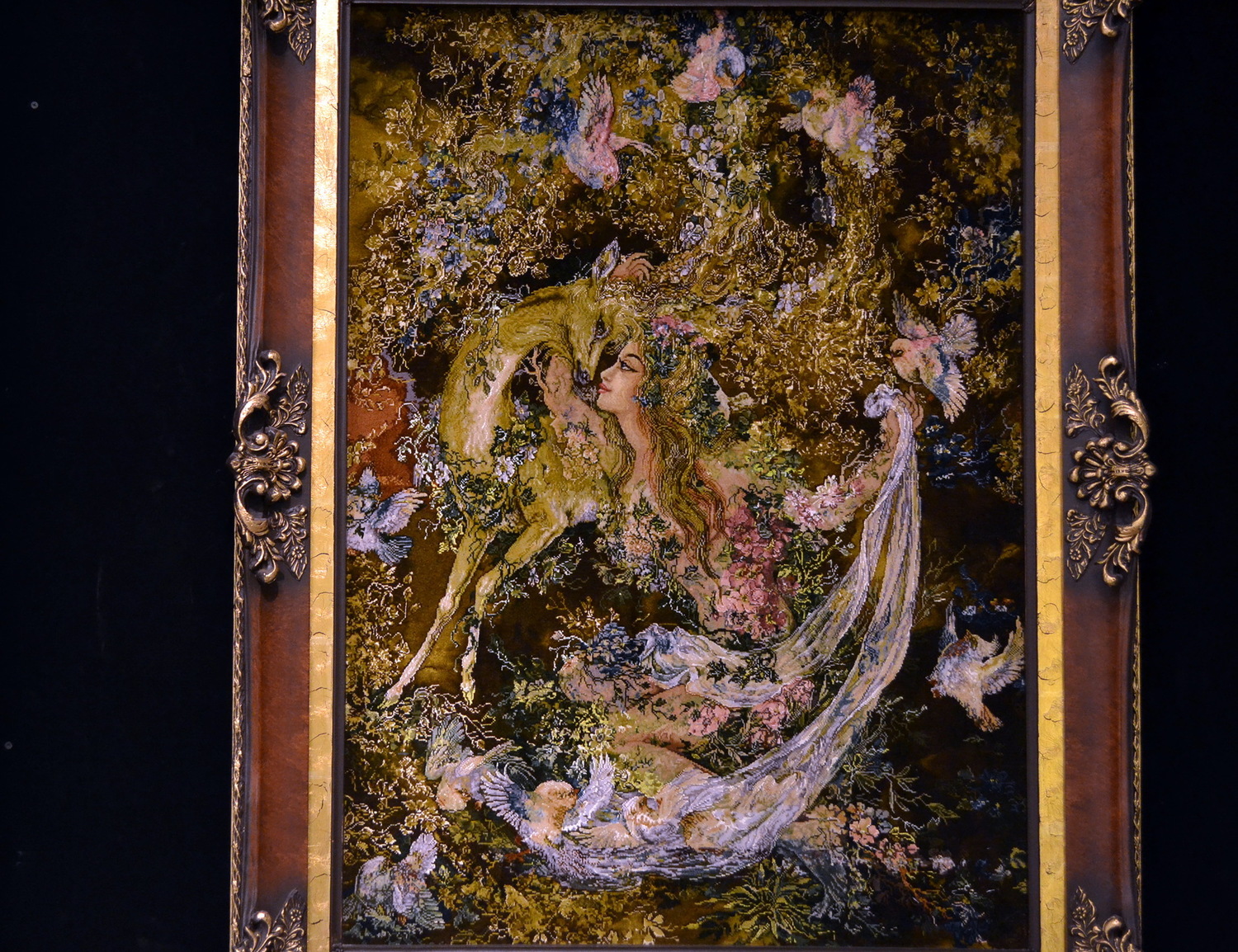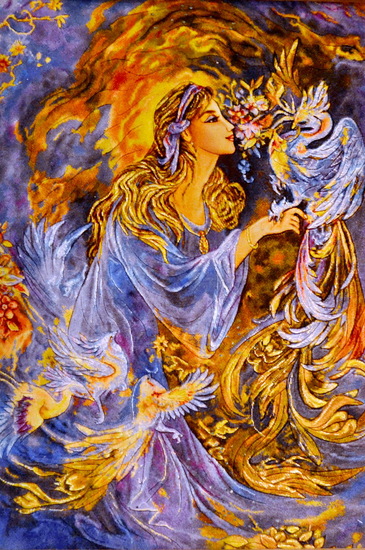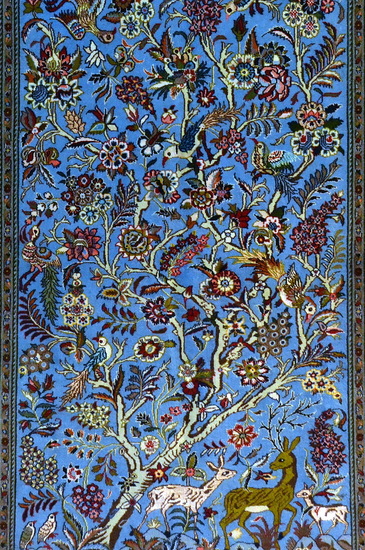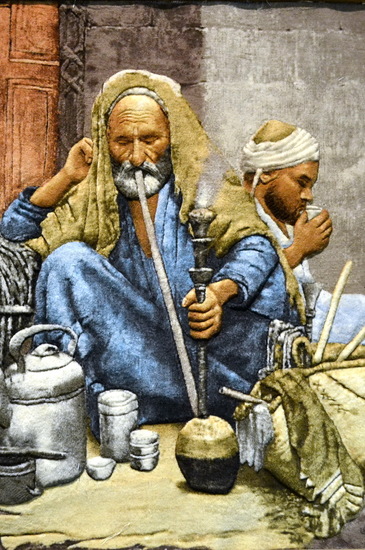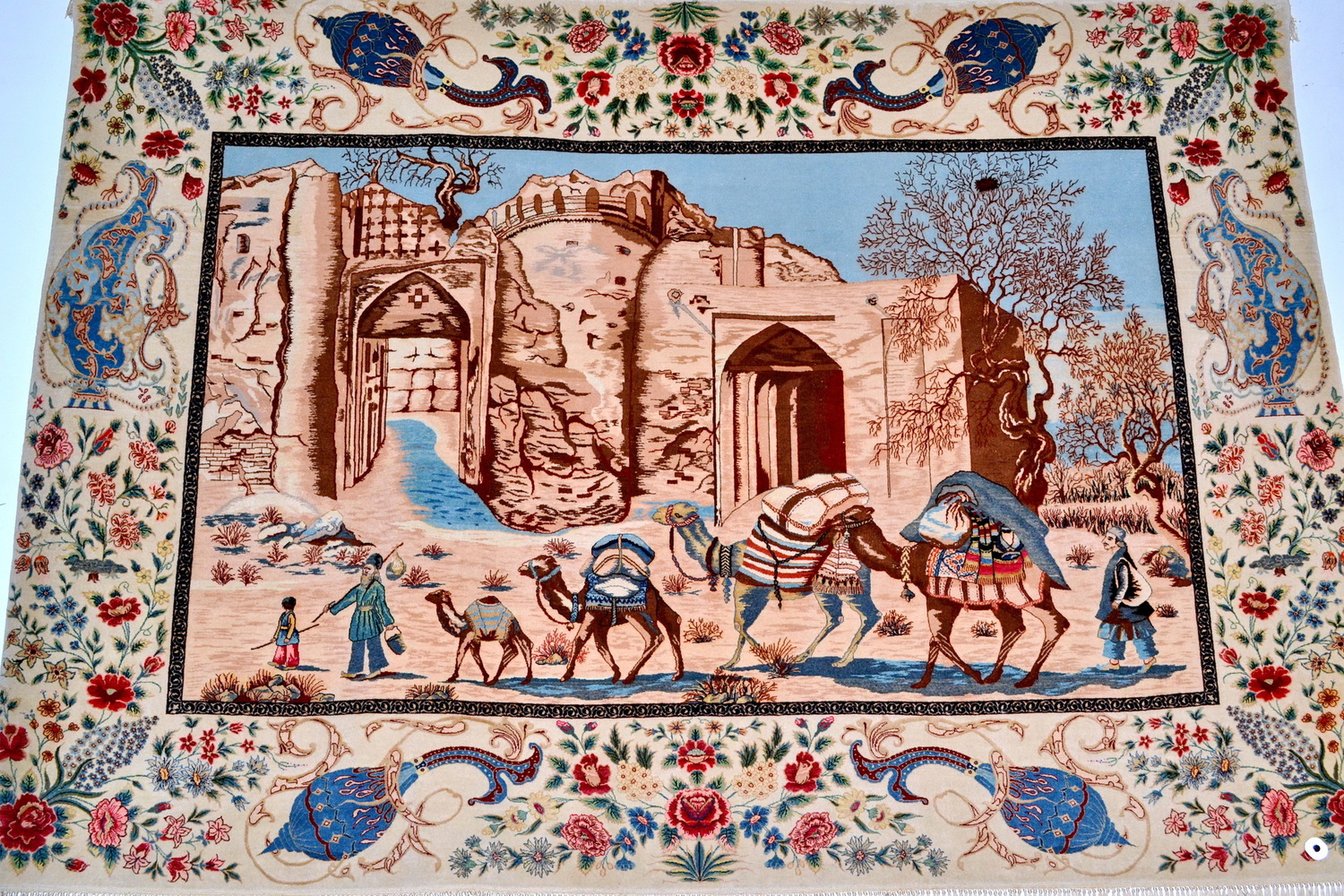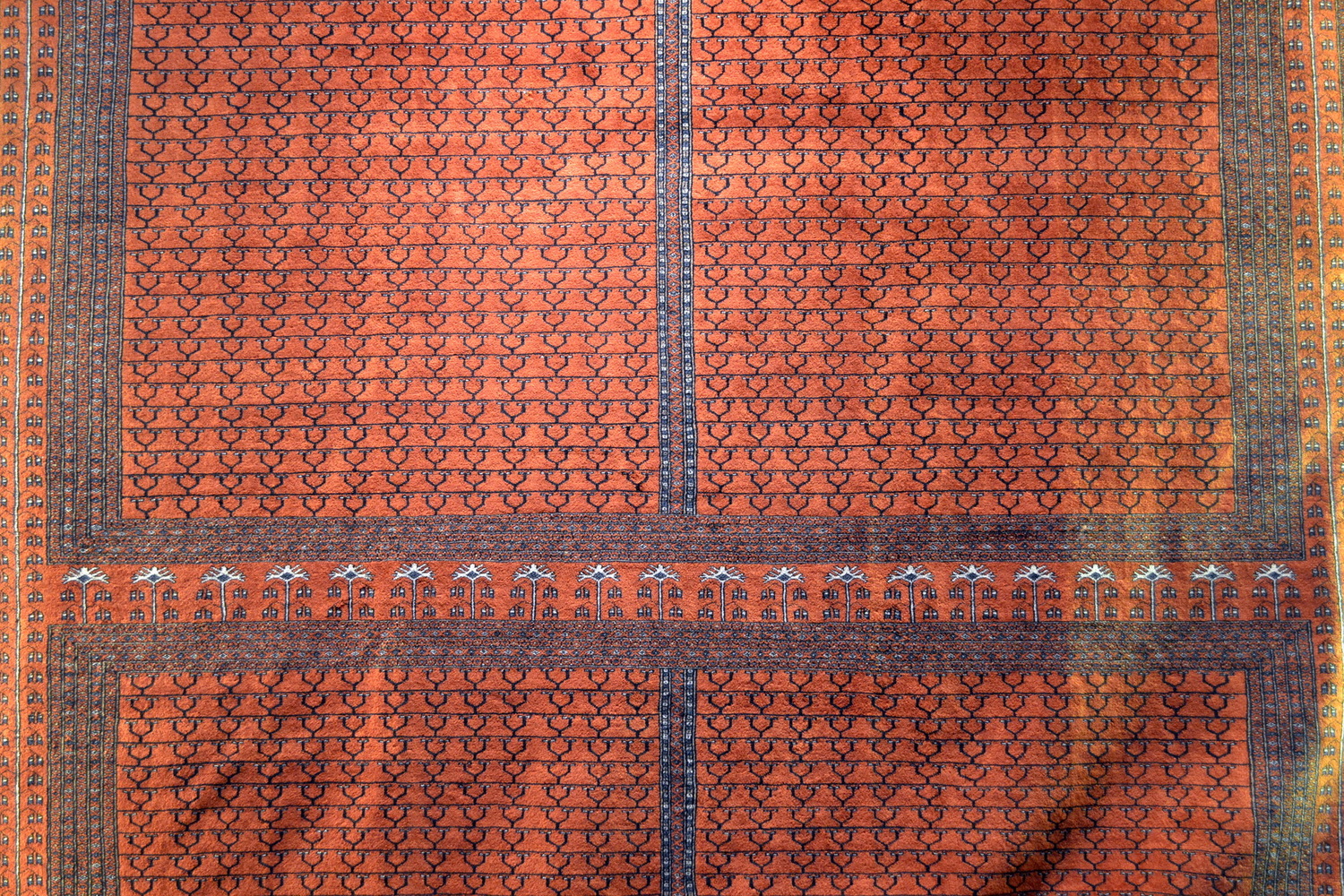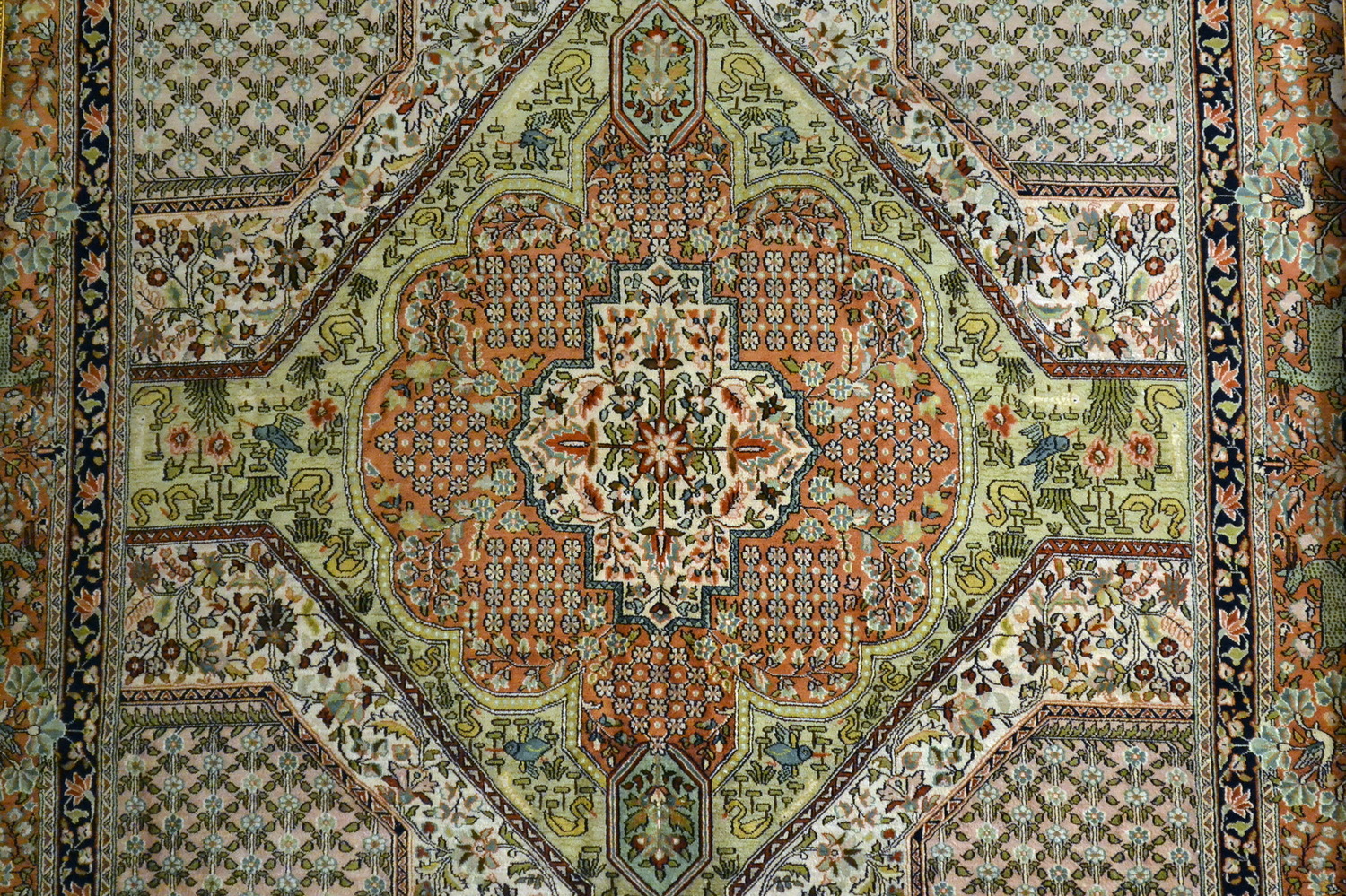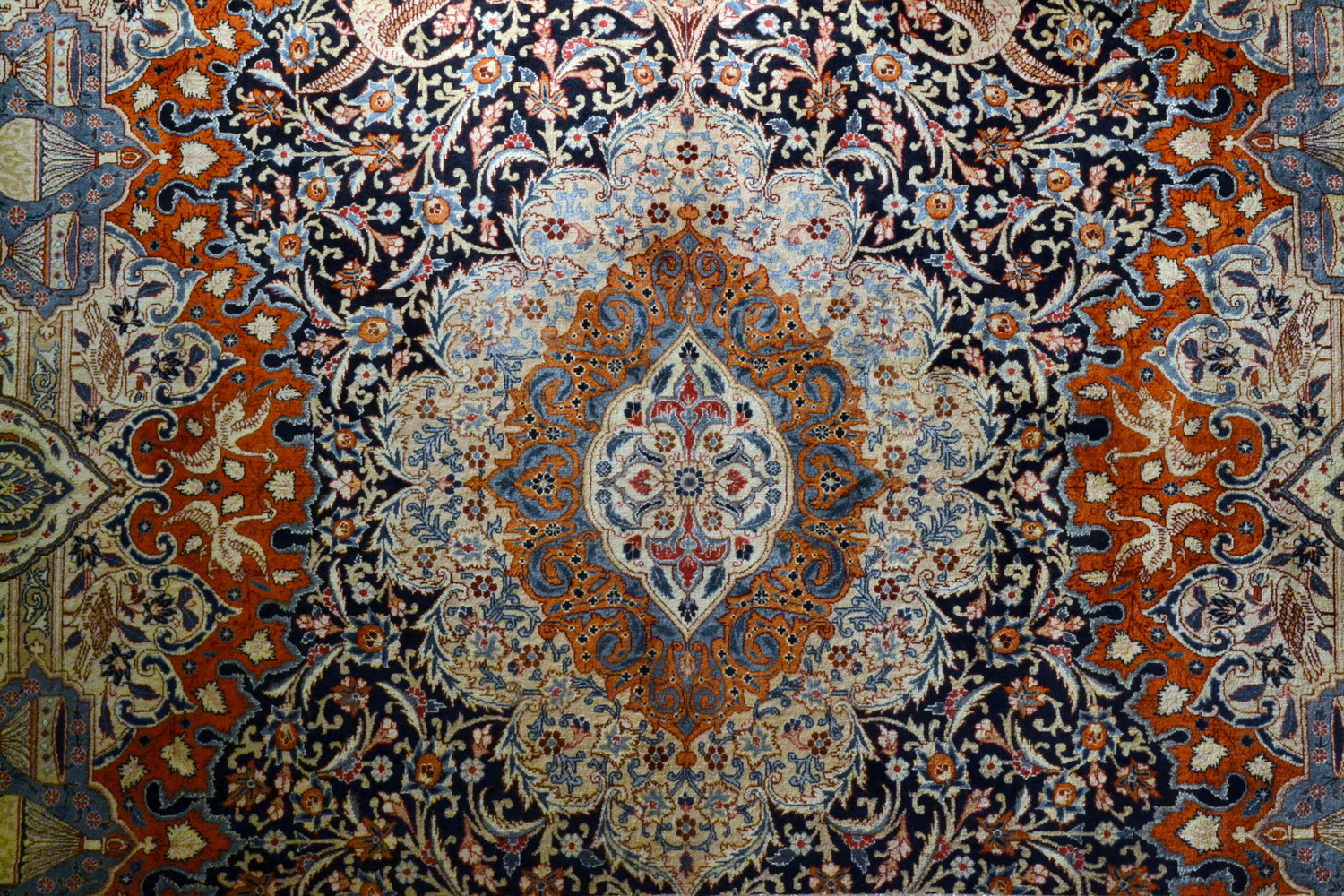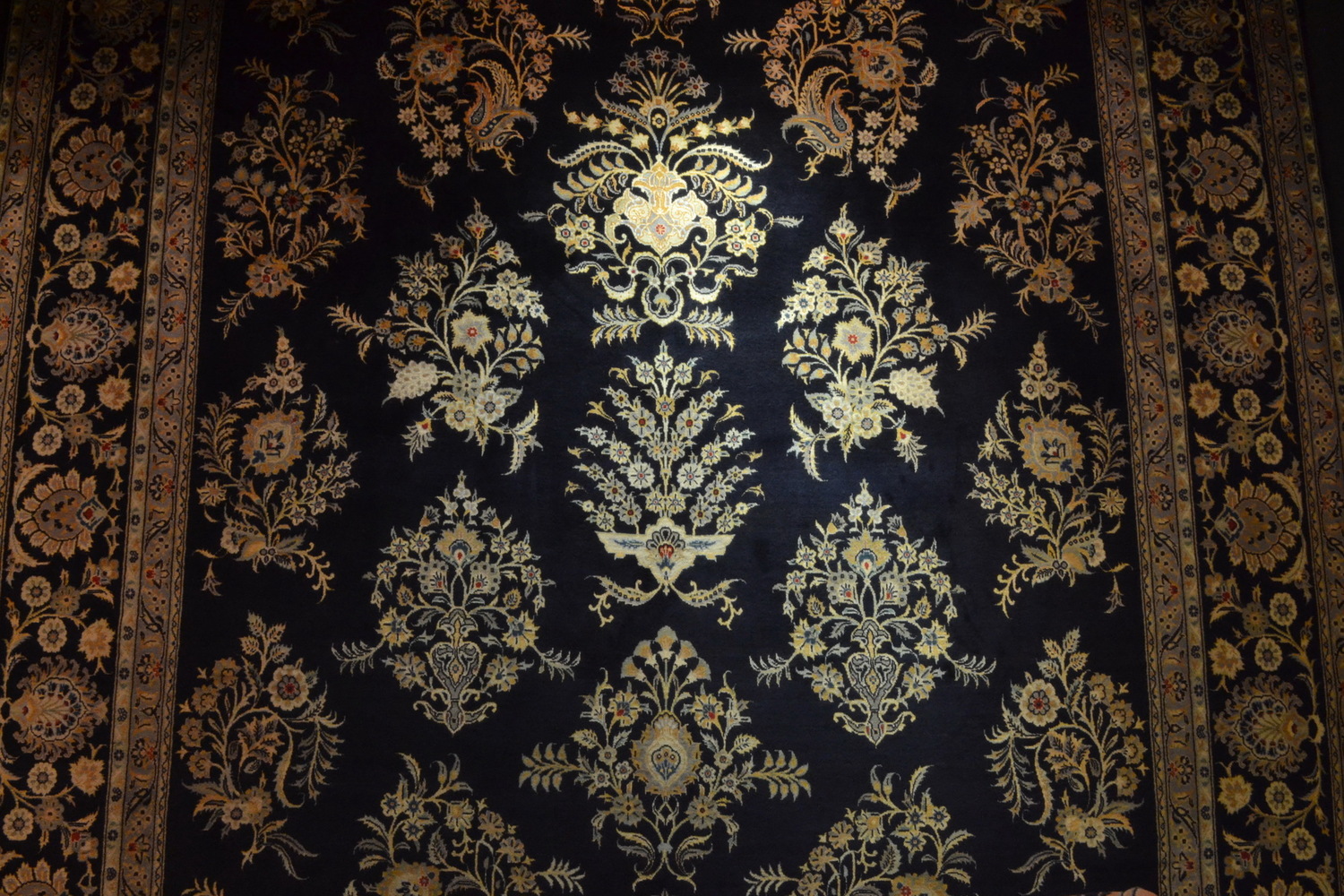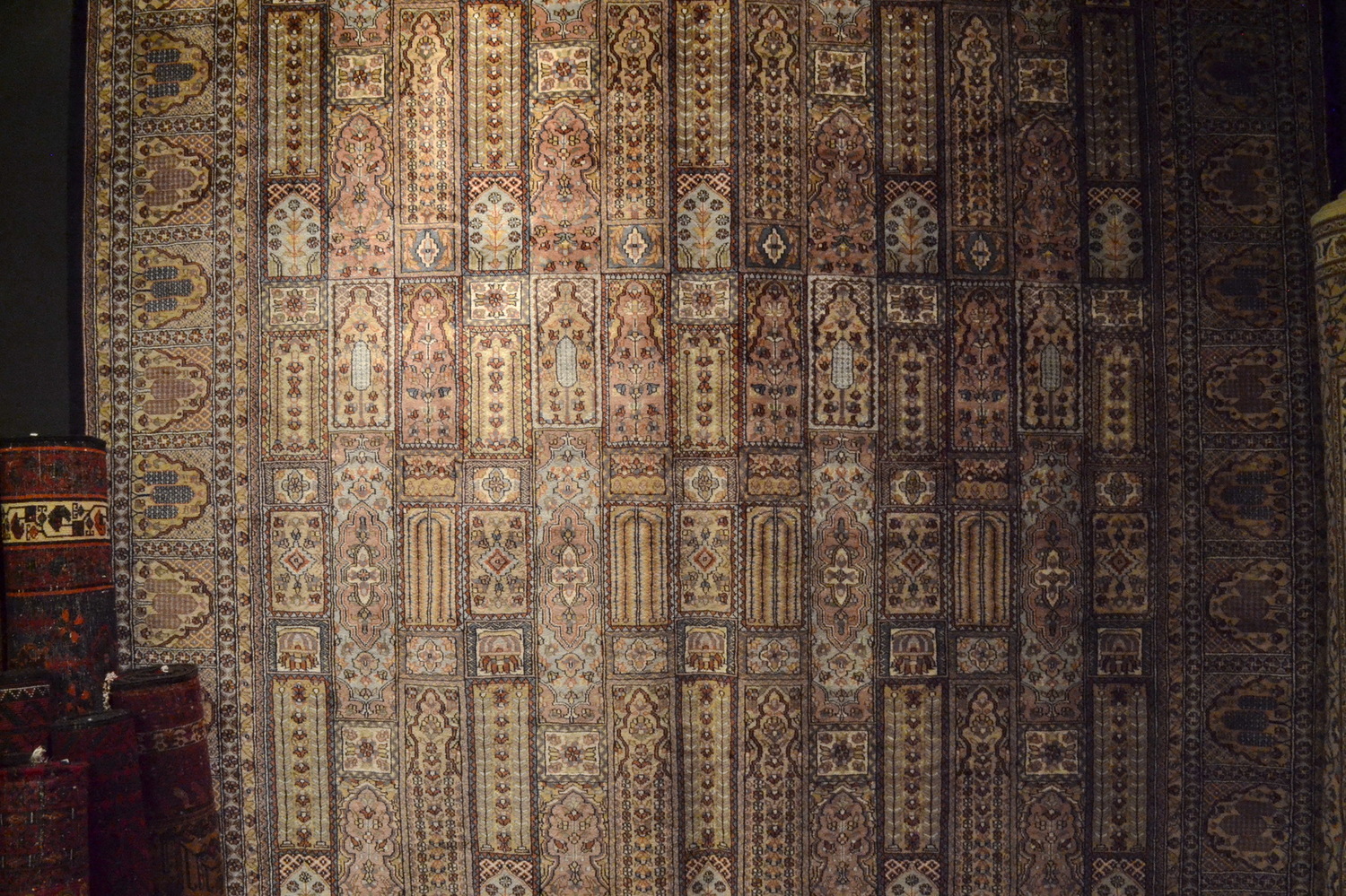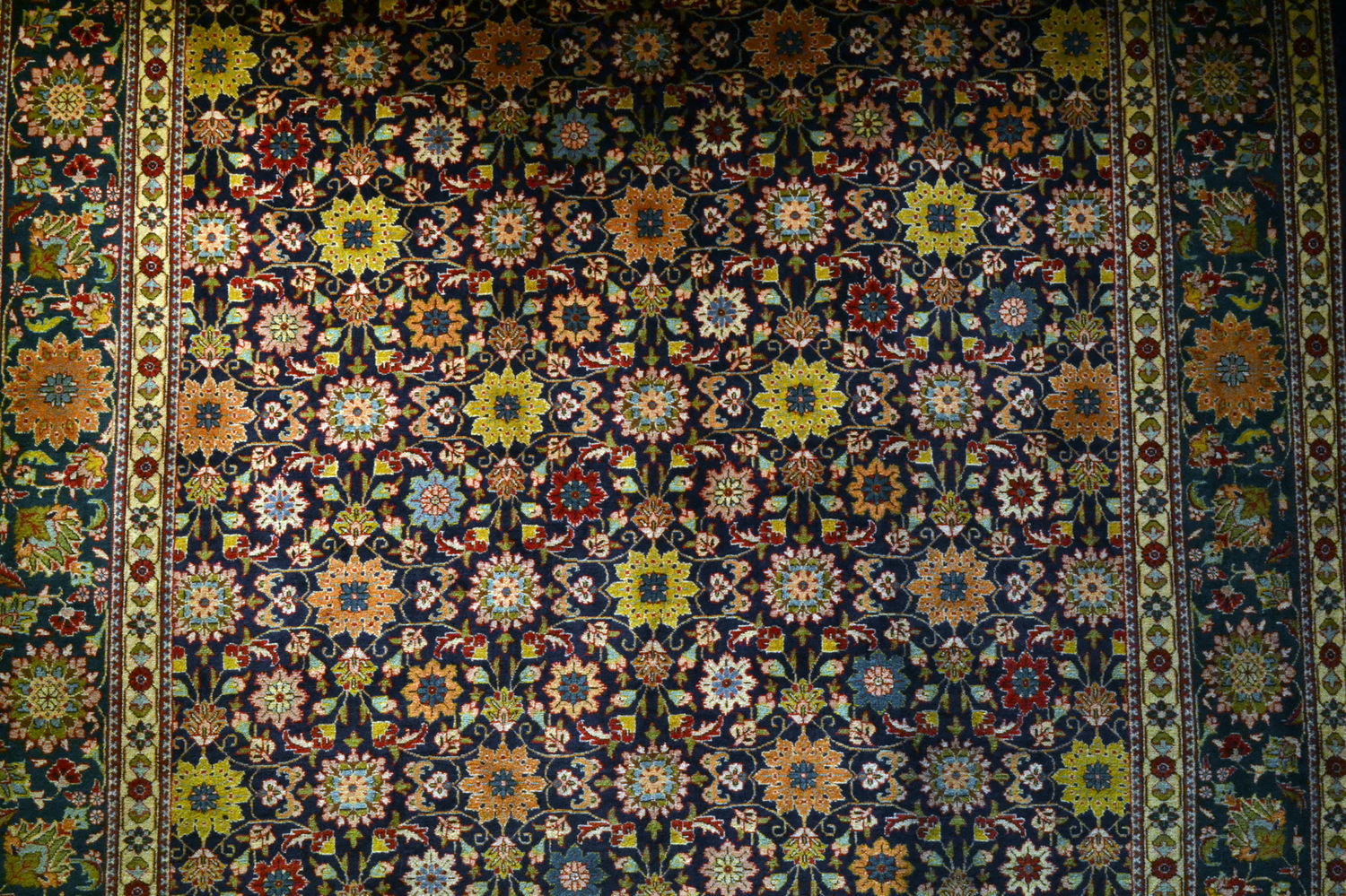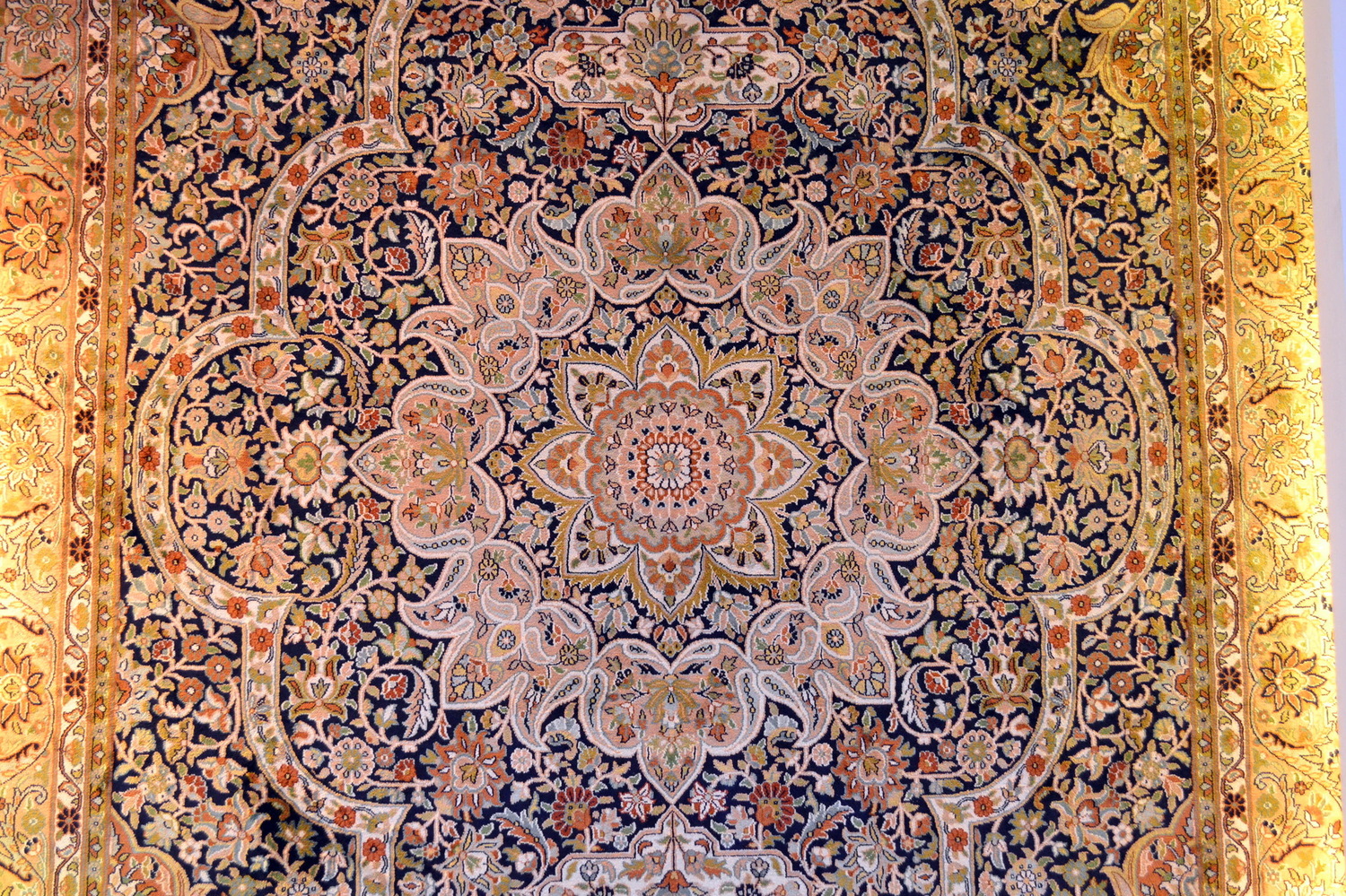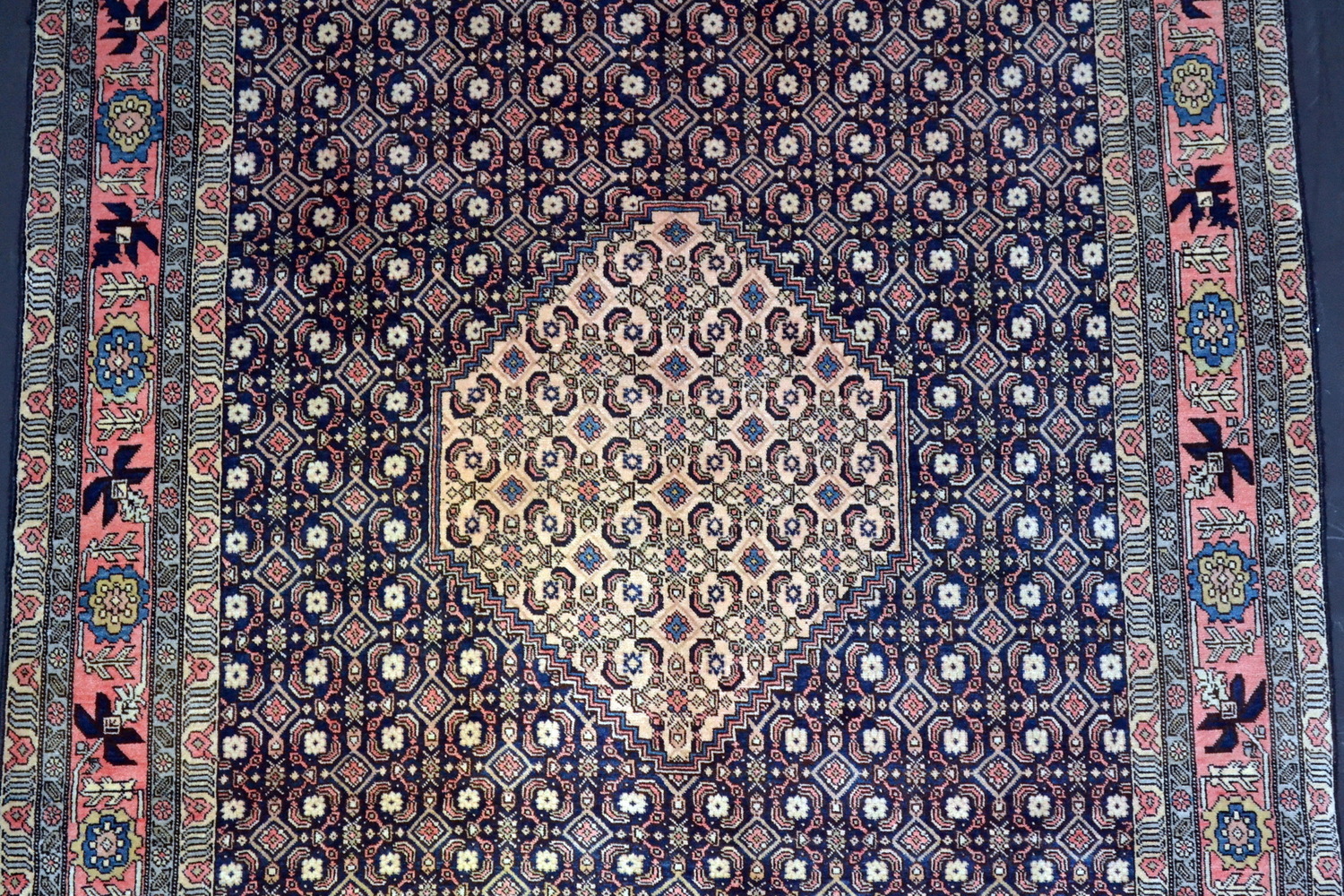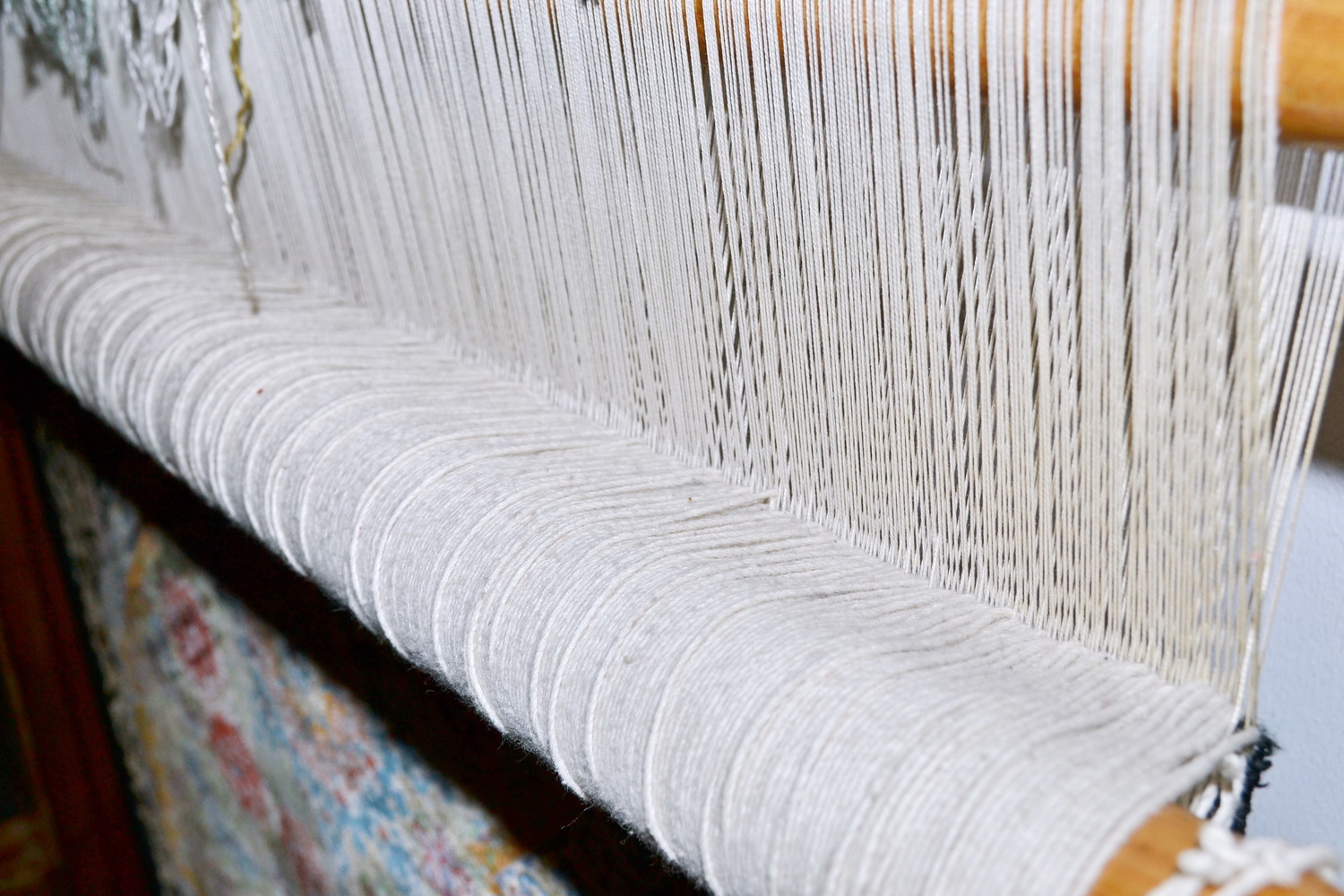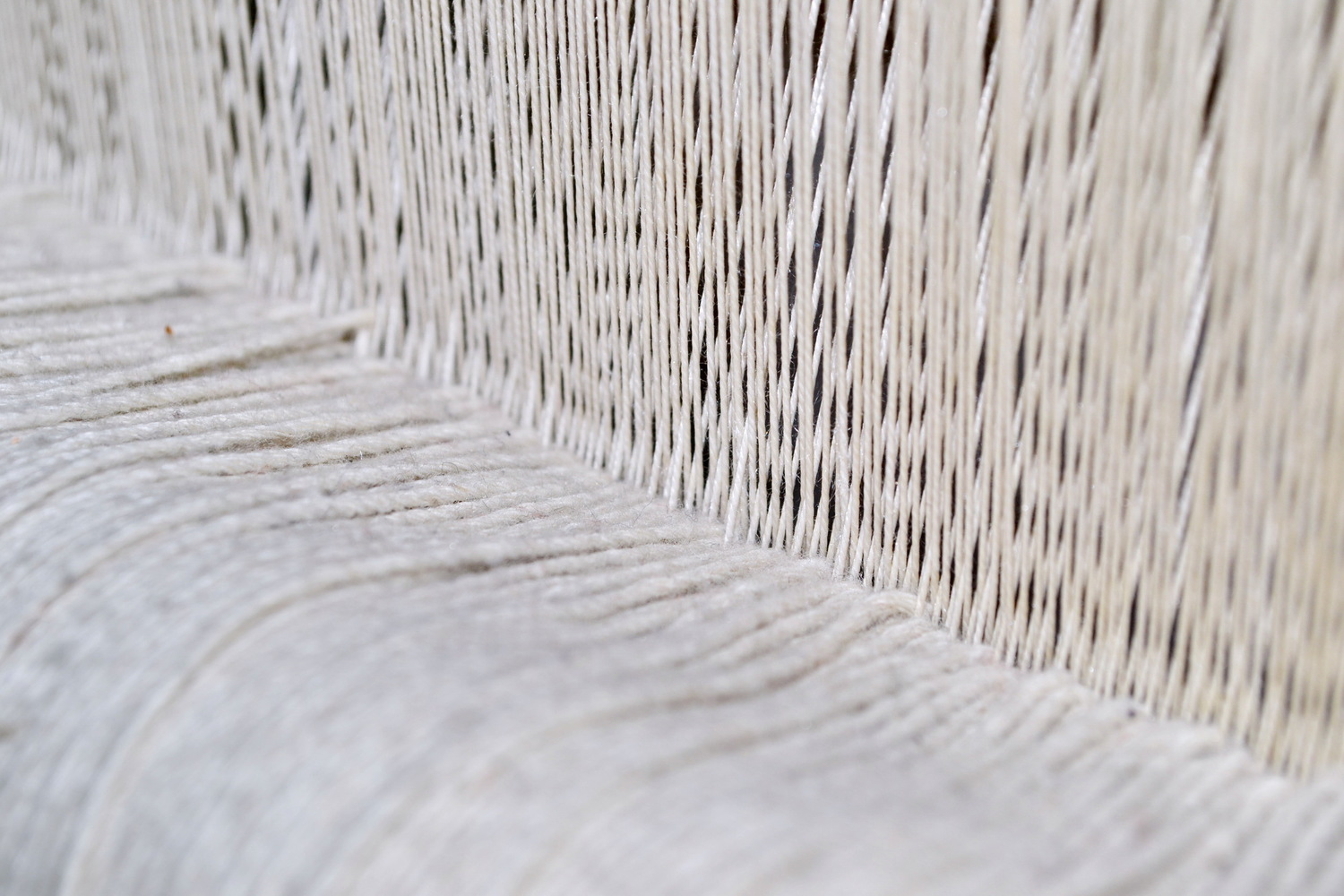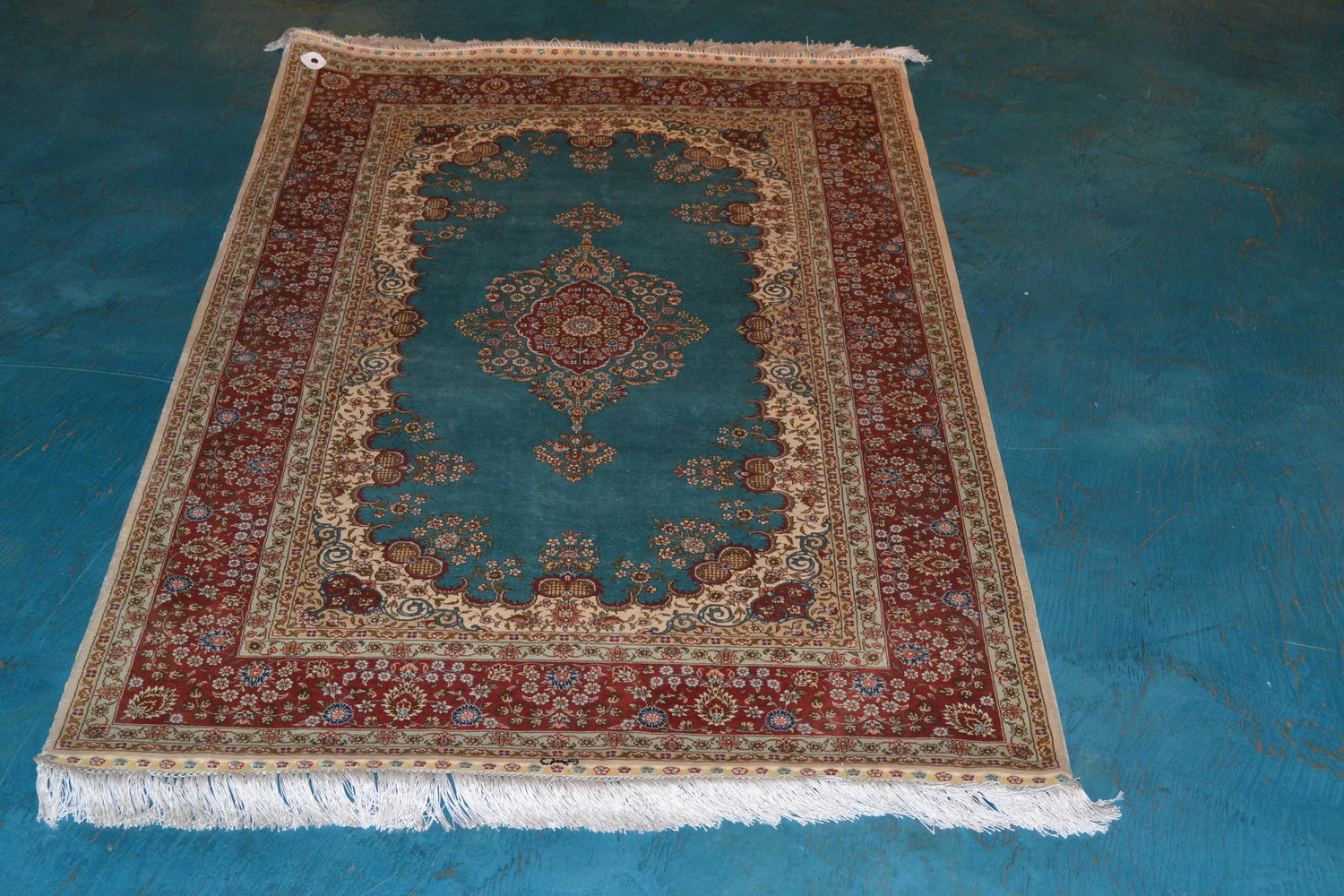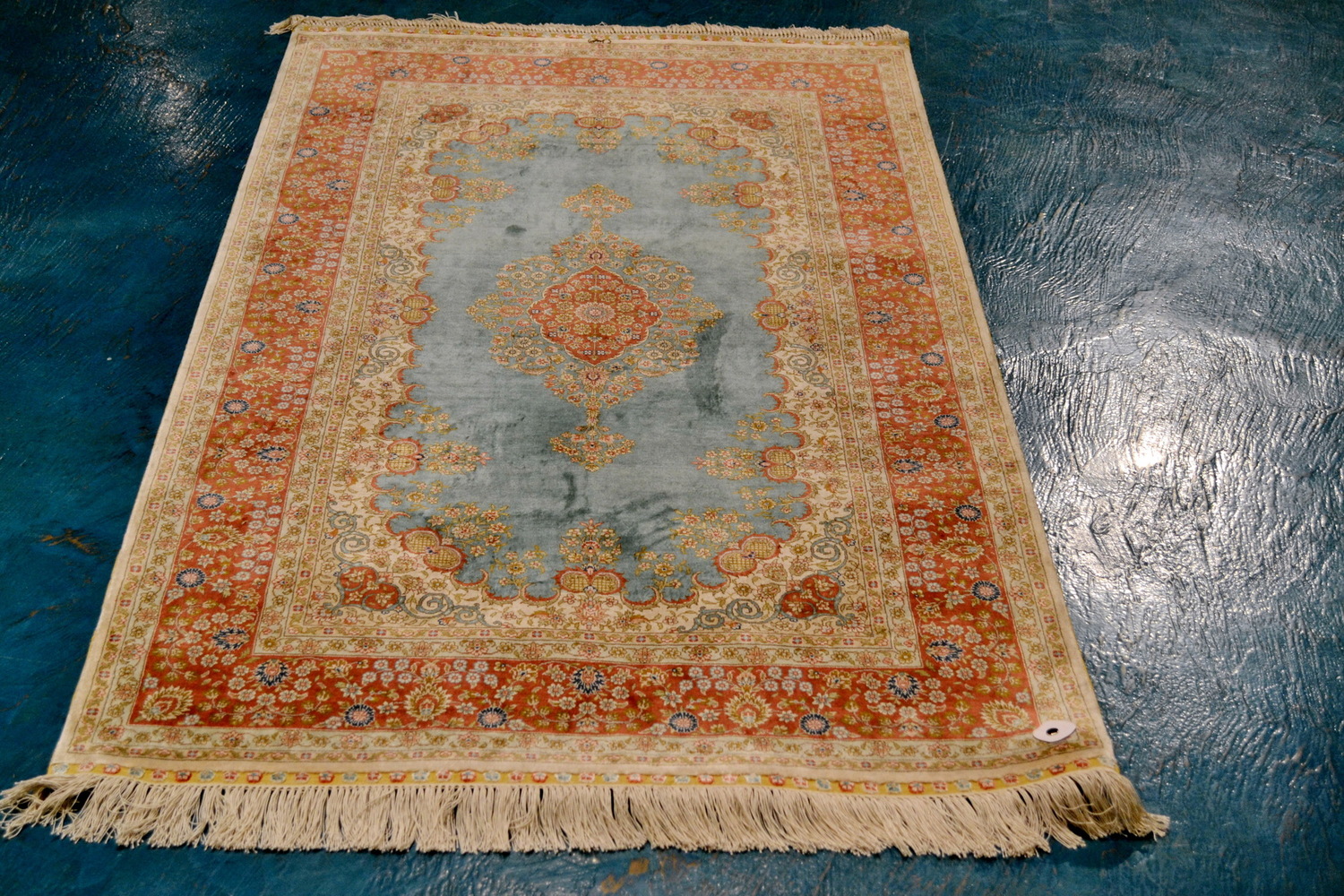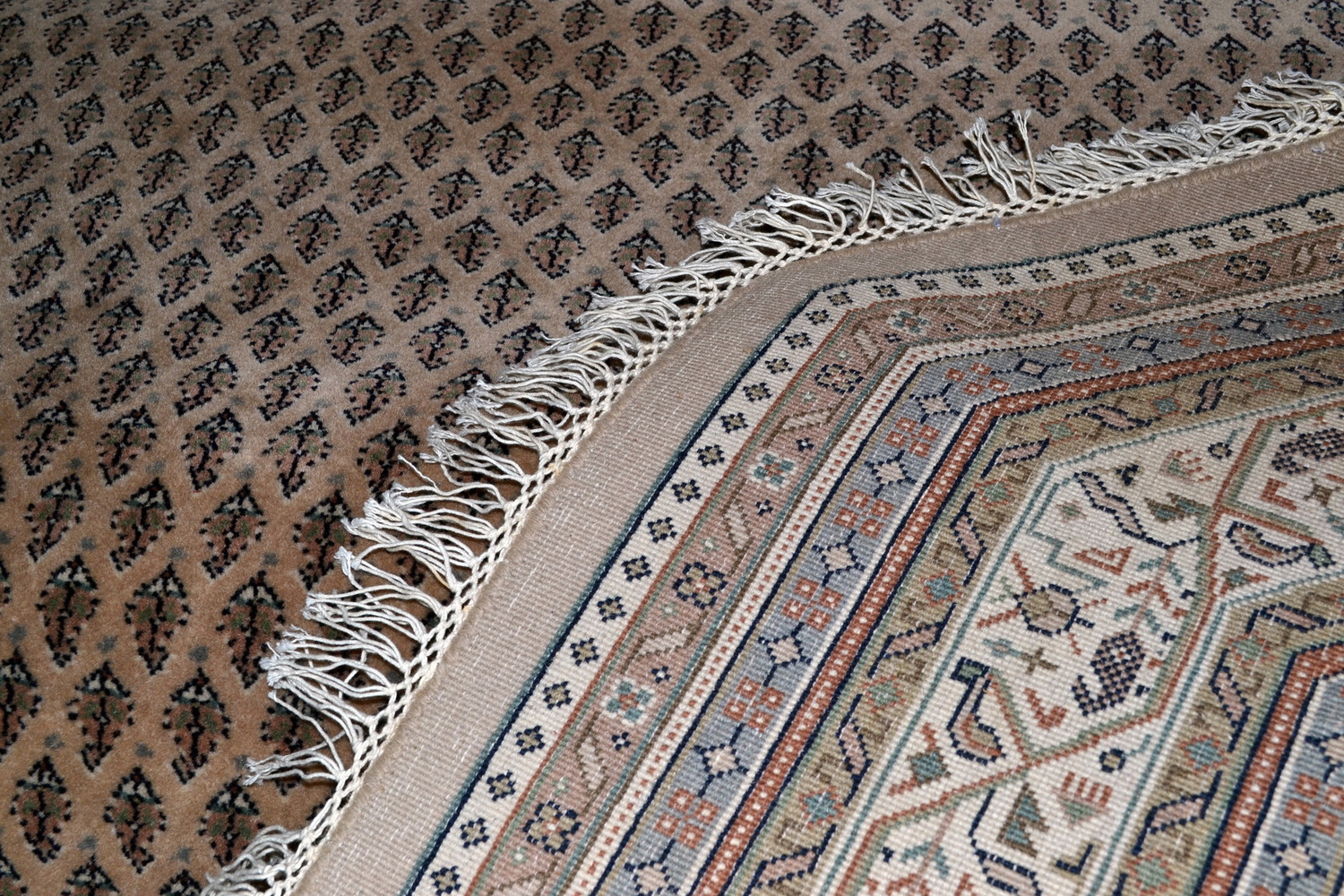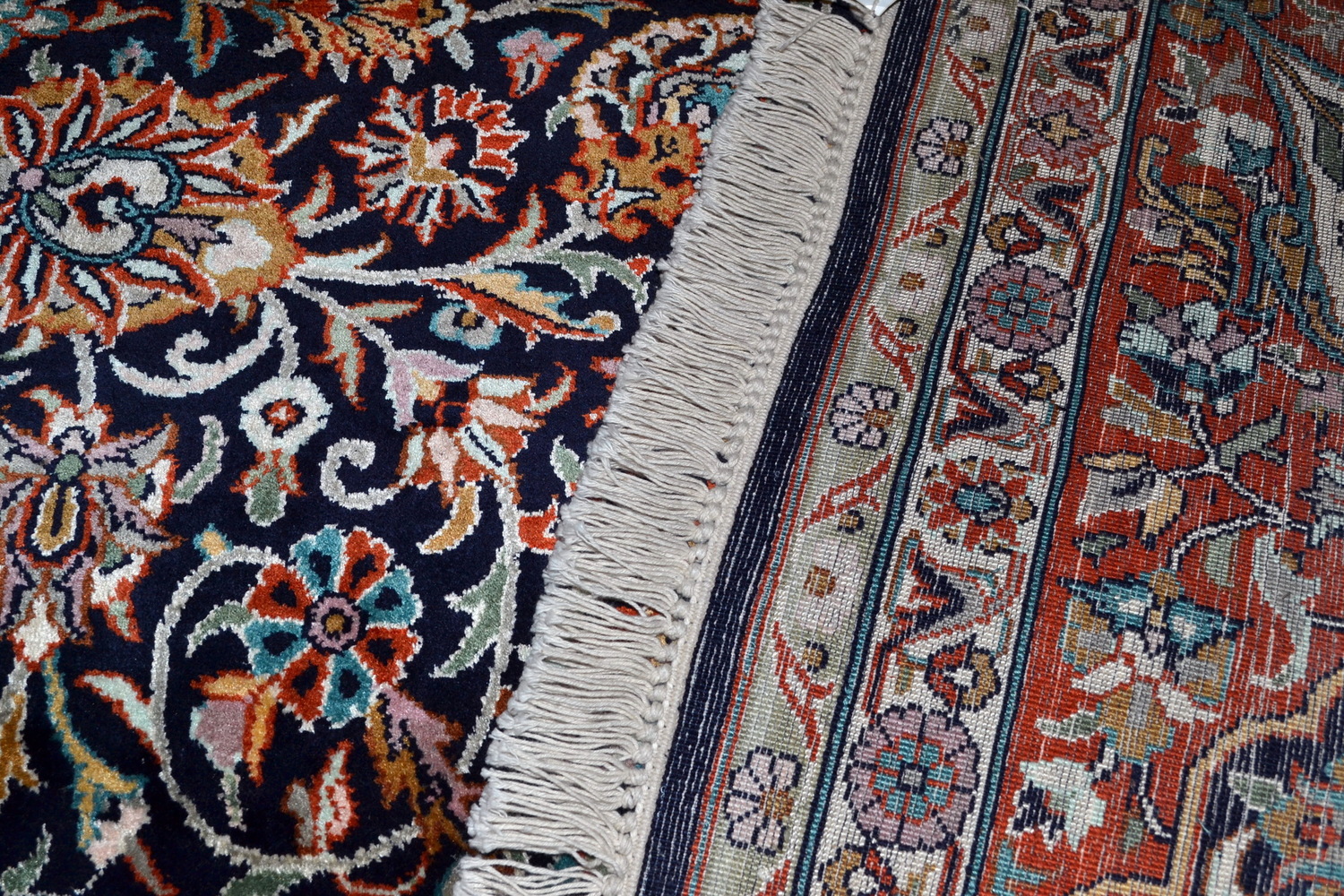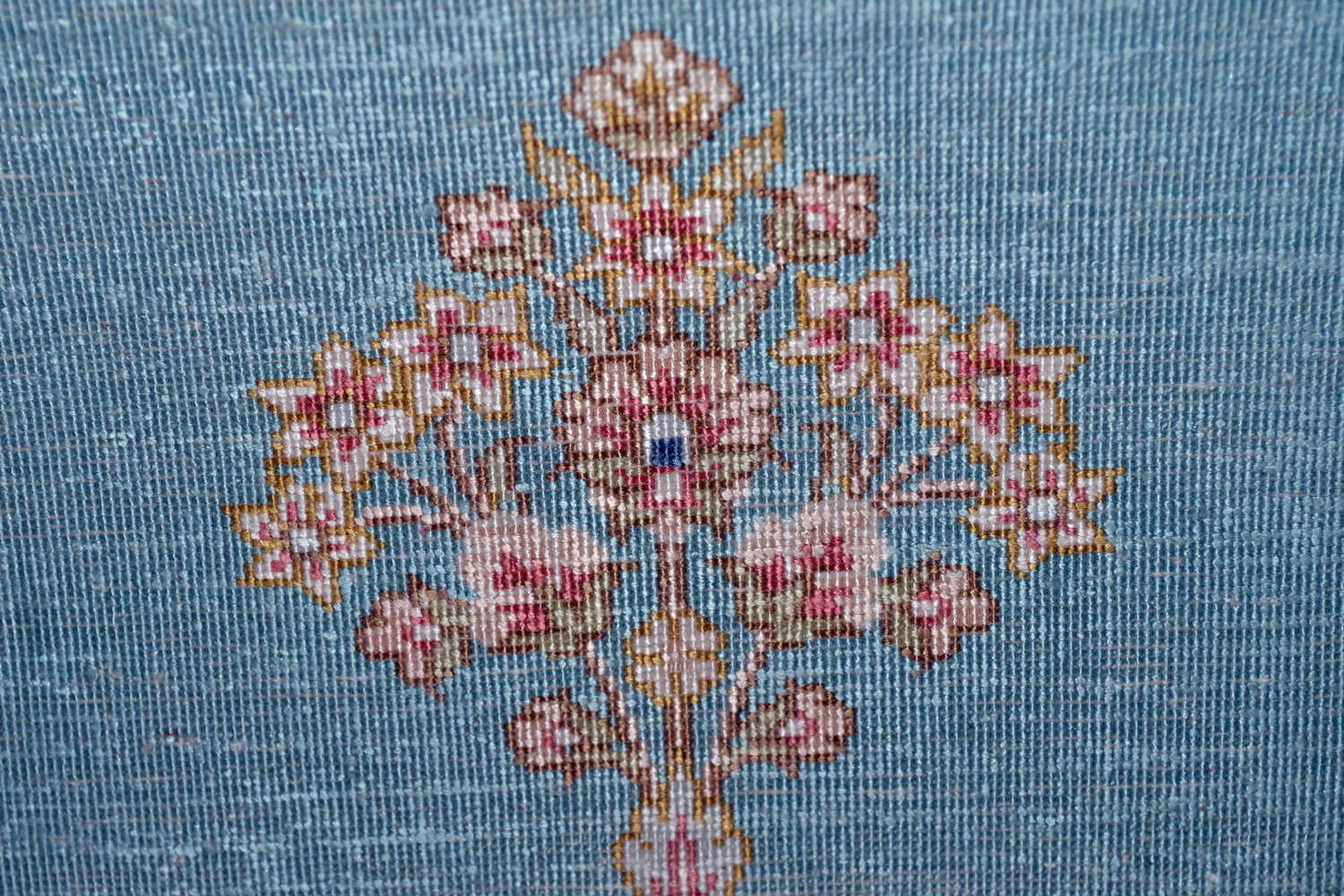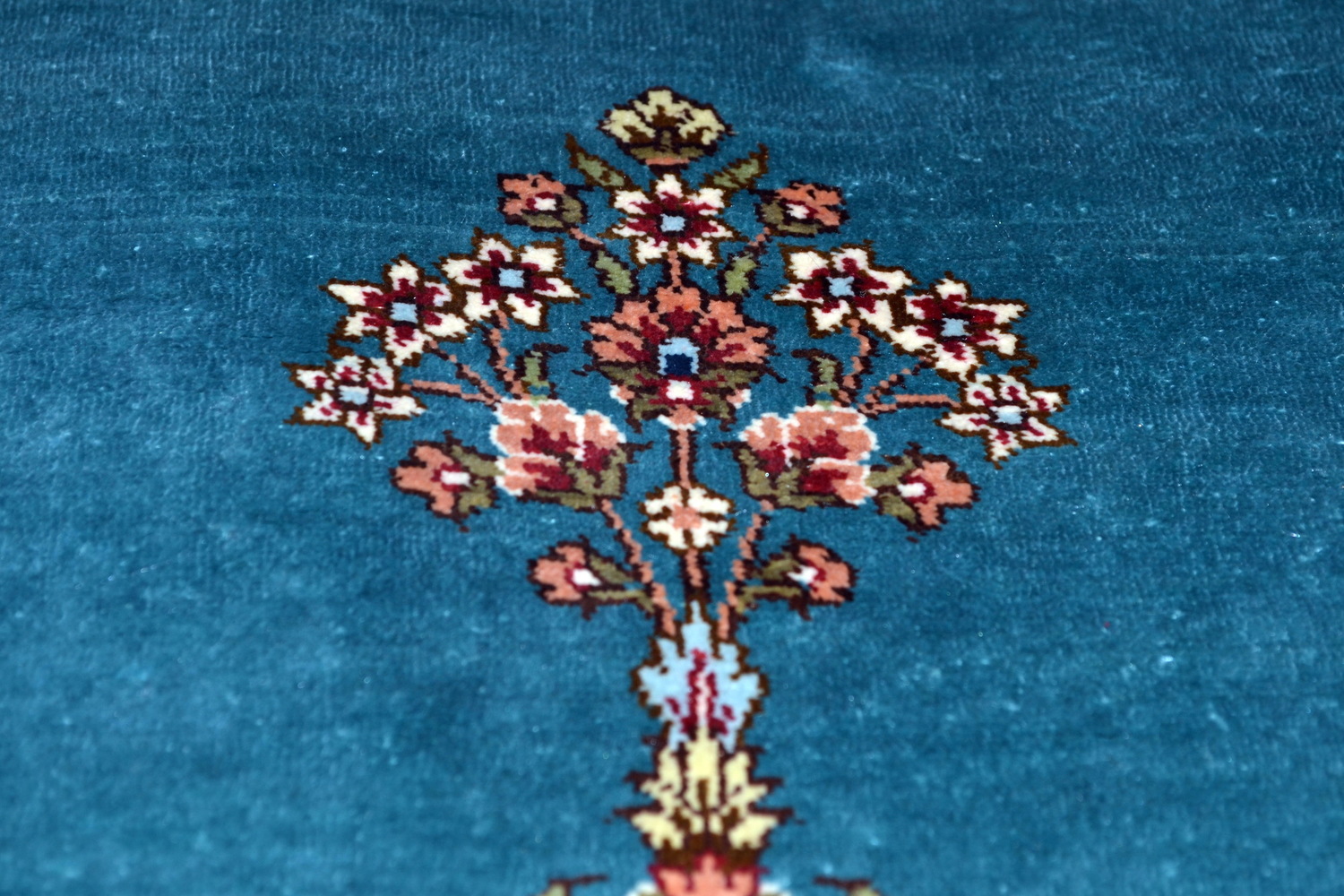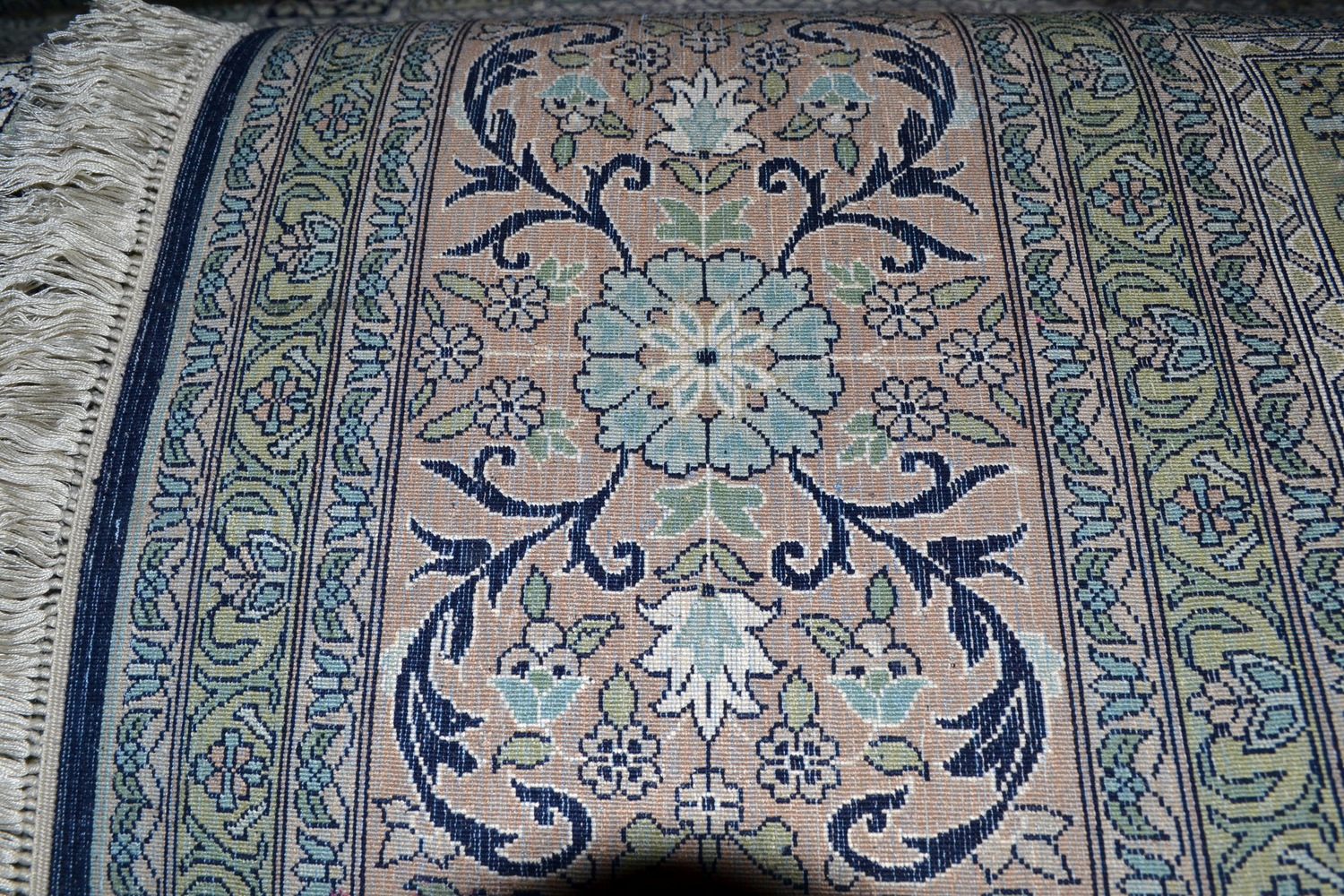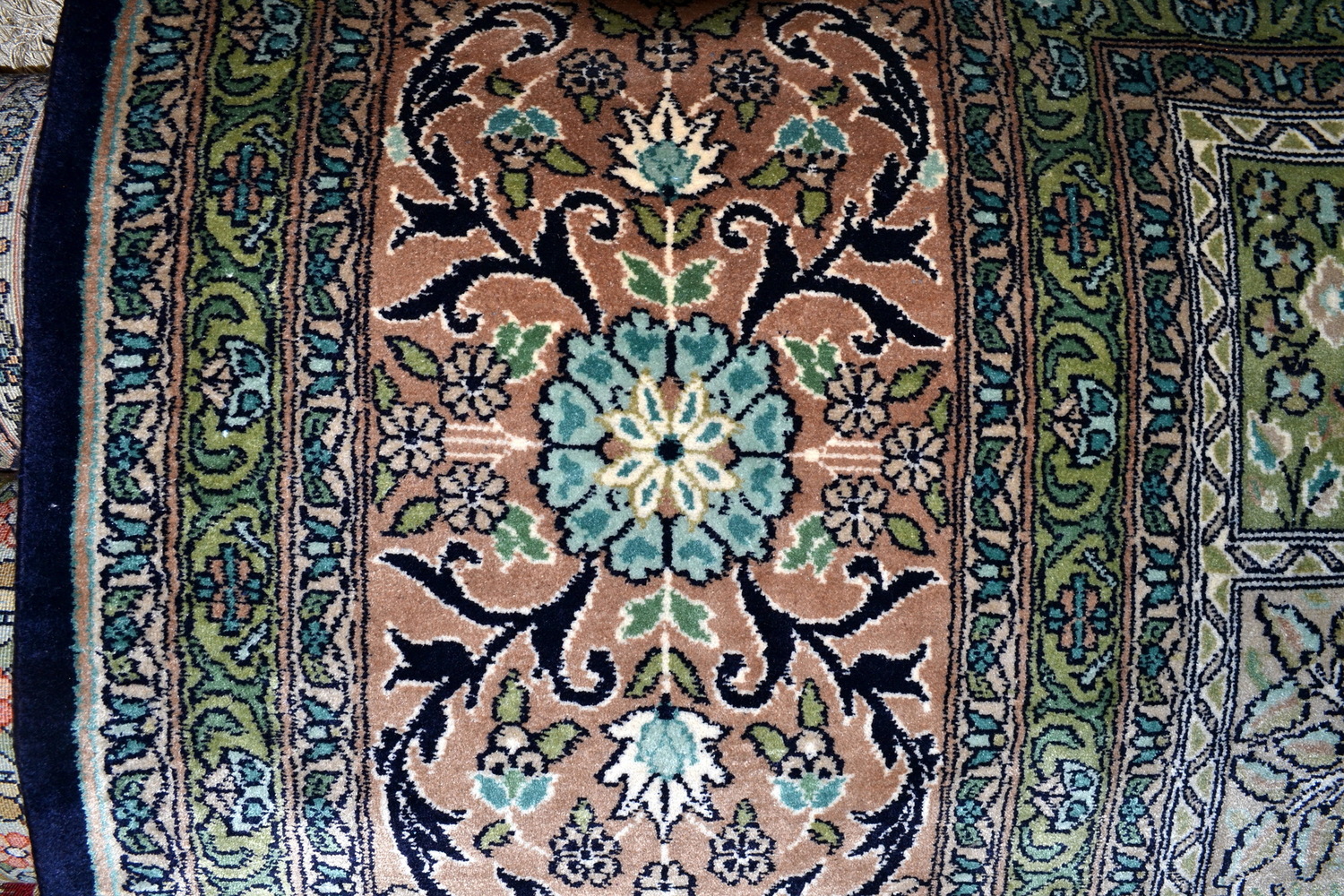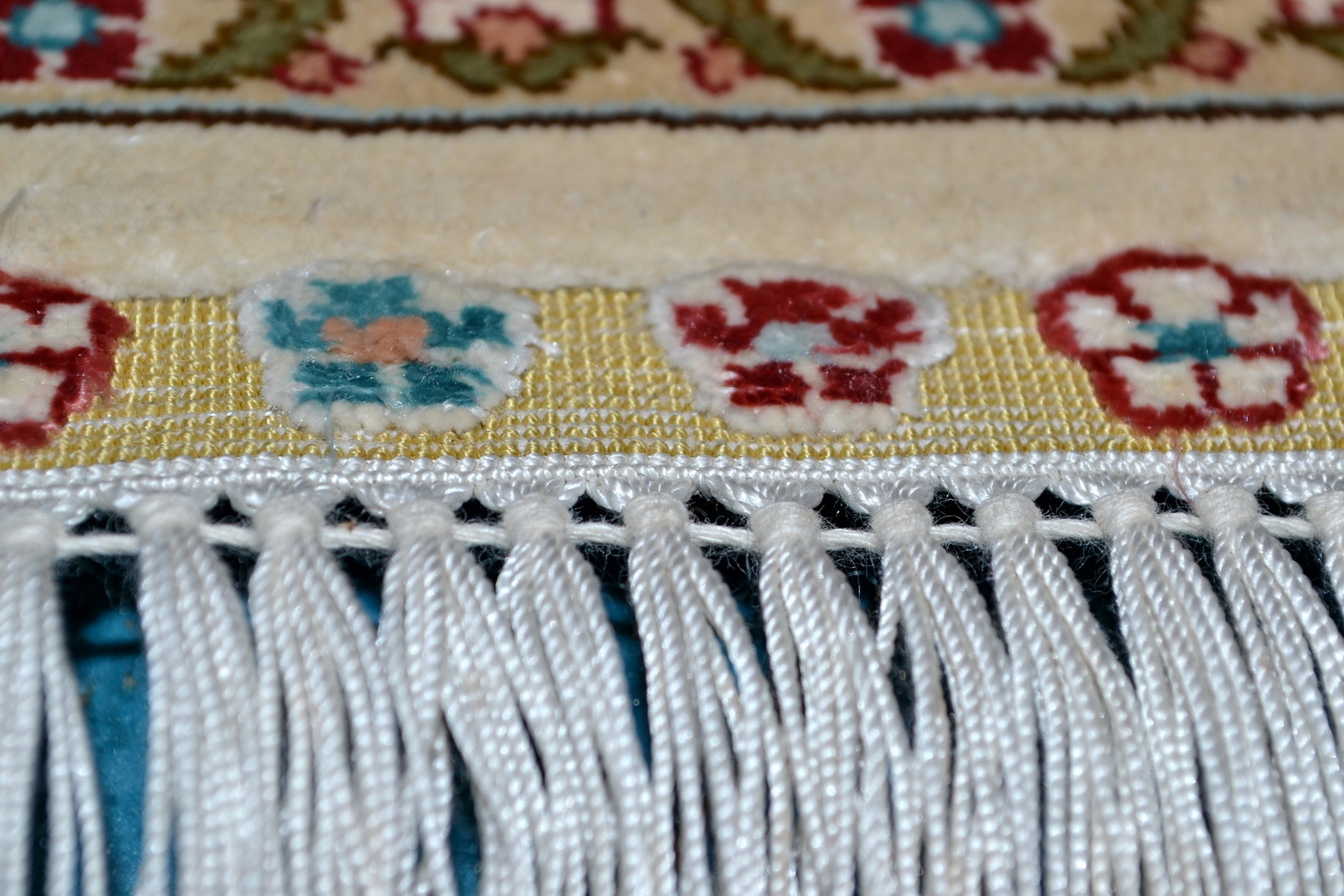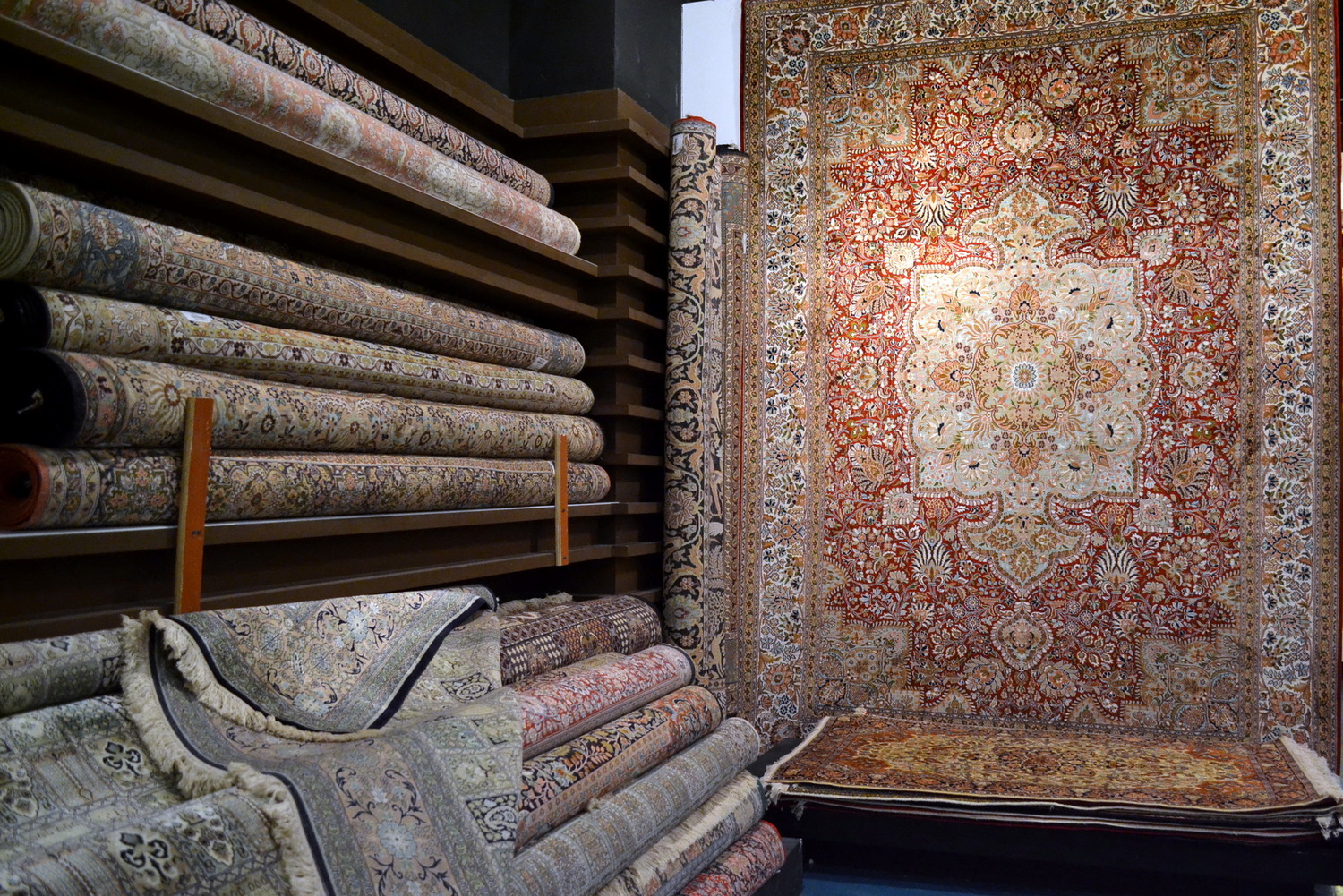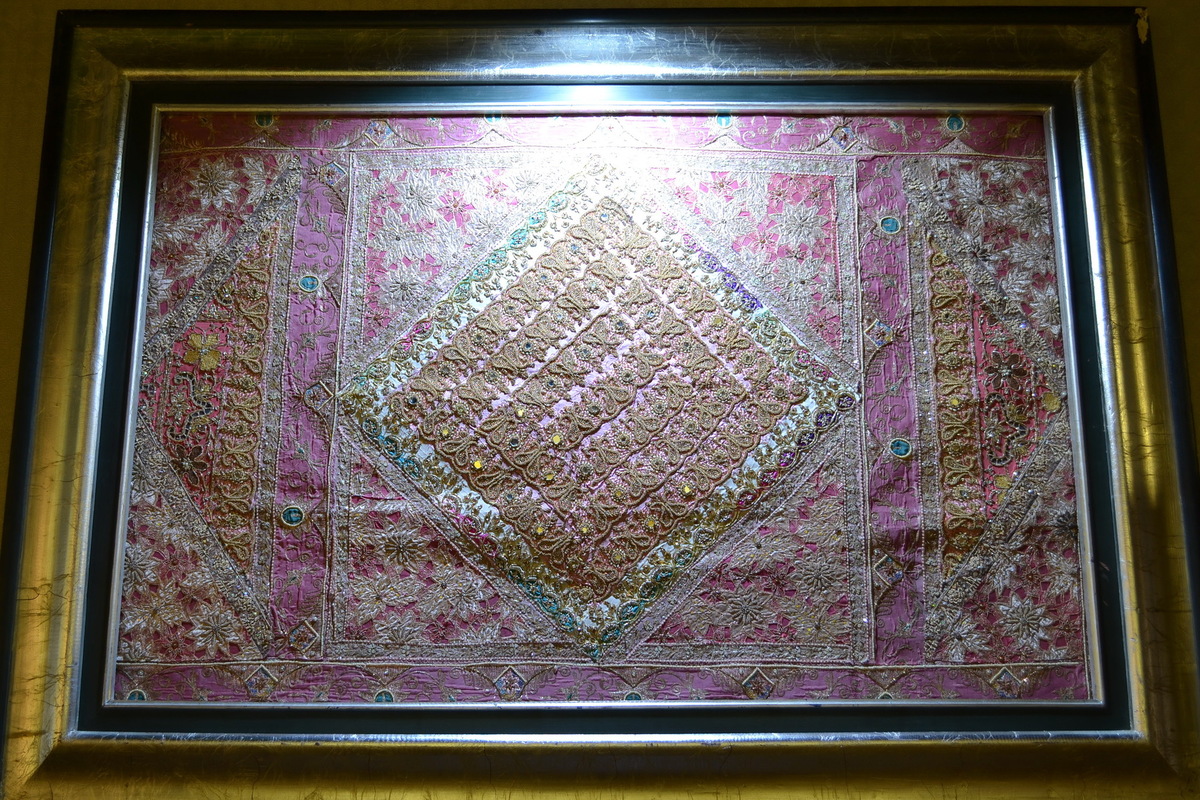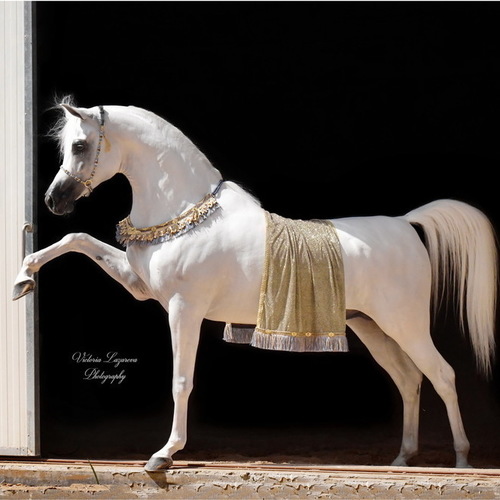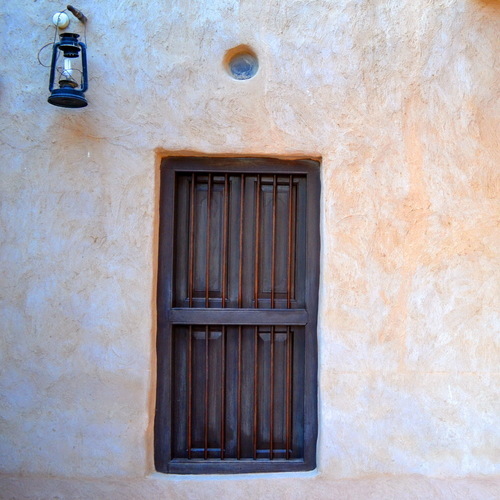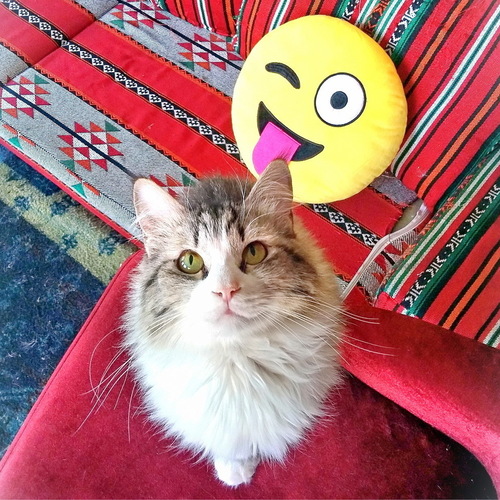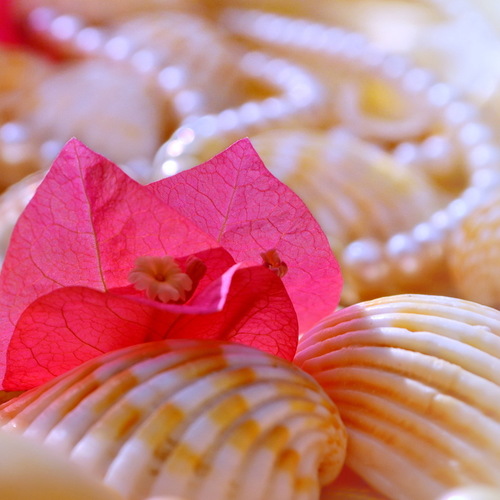A hand-made oriental carpet. A noble companion of luxury
Carpet weaving as a handicraft originated a few thousand years ago. Woolen Pazyryk carpet, the oldest from the existing ones nowadays, gives evidence of that. Being found in Altai during archaeological excavation, Pazyryk carpet was woven in Western Asia about 500 B.C. If we become engrossed in the twilight of history we will find ourselves in powerful Persian Empire during Achaemenid dynasty rule.
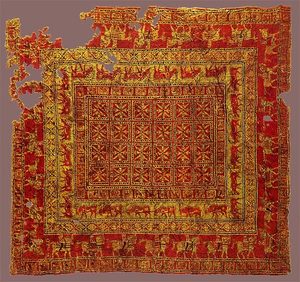
Those rulers’ palaces gorgeous ornamentation was spoken about a lot. Magnificent carpets occupied the central position in privy chambers. Only the ruler was allowed to set foot on “hand-woven pictures”.
In the picture – a jewel carpet from Miraj Islamic Art Centre collection,
UAE, Dubai, Jumeira Beach Rd, Umm Suqeim 1.
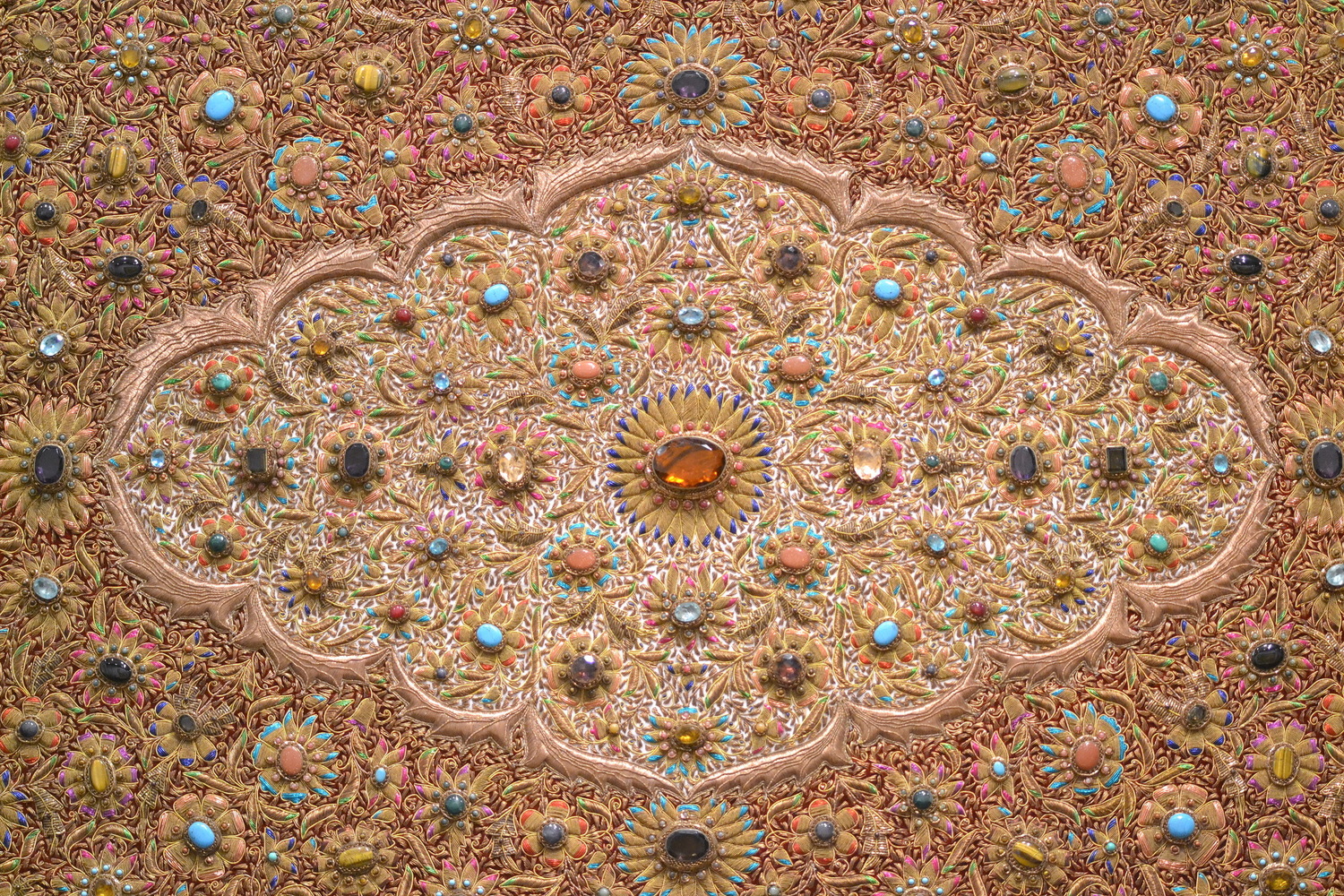 © Victoria Lazareva, feelingthelife.com
© Victoria Lazareva, feelingthelife.com
Nowadays oriental carpet is still an article of luxury. Iconophilists equate it to a piece of art.
Collectors of antiques strain after getting old samples shelling out hundreds of thousands dollars for them.
In the picture- an antiquarian carpet from Miraj International collection, Abu Dhabi
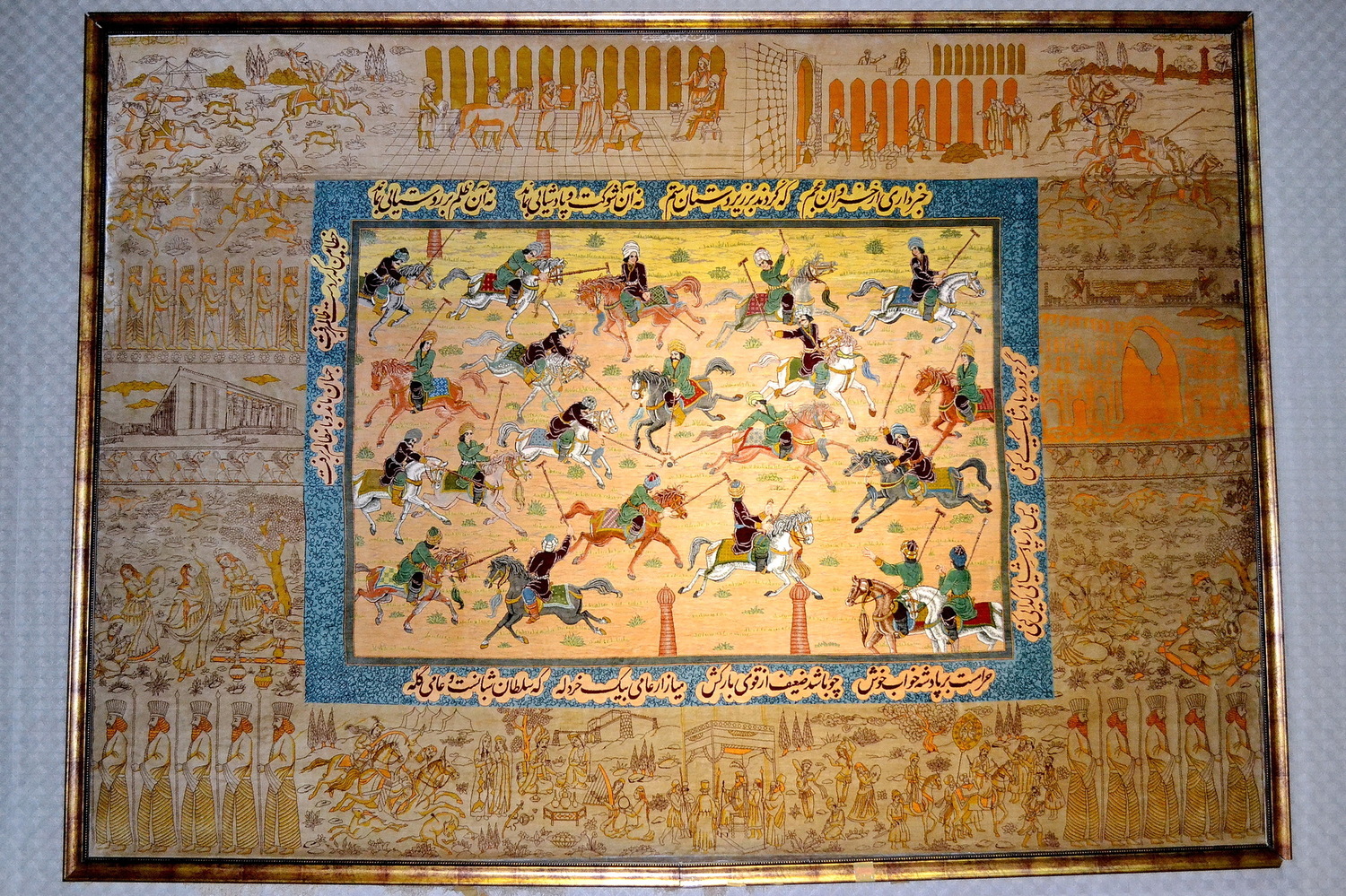 © Victoria Lazareva, feelingthelife.com
© Victoria Lazareva, feelingthelife.com
Orient carpet goes hand in hand with prosperity and high living standards. It gives the feeling of peace and accomplished prosperity. It beautifies great halls and bedrooms of genteel villas and yachts reflecting sophisticated tastes of their owners.
Expensive oriental carpet has been being an heirloom handed down from generation to generation for a long time. As the years go by it is almost becoming a family member, quietly keeping dynasty secrets and mysteries.
In the picture – a hand-made woolen carpet from the collection of Saga World Center art-gallery,
UAE, Dubai, Jumeira Beach Rd, Umm Suqeim 1.
- © Victoria Lazareva, feelingthelife.com
As a masterpiece each hand-made carpet has its own recognizable face. The most expensive ones even have names!
Author’s signature or weaver’s monogram can be found on some of them.
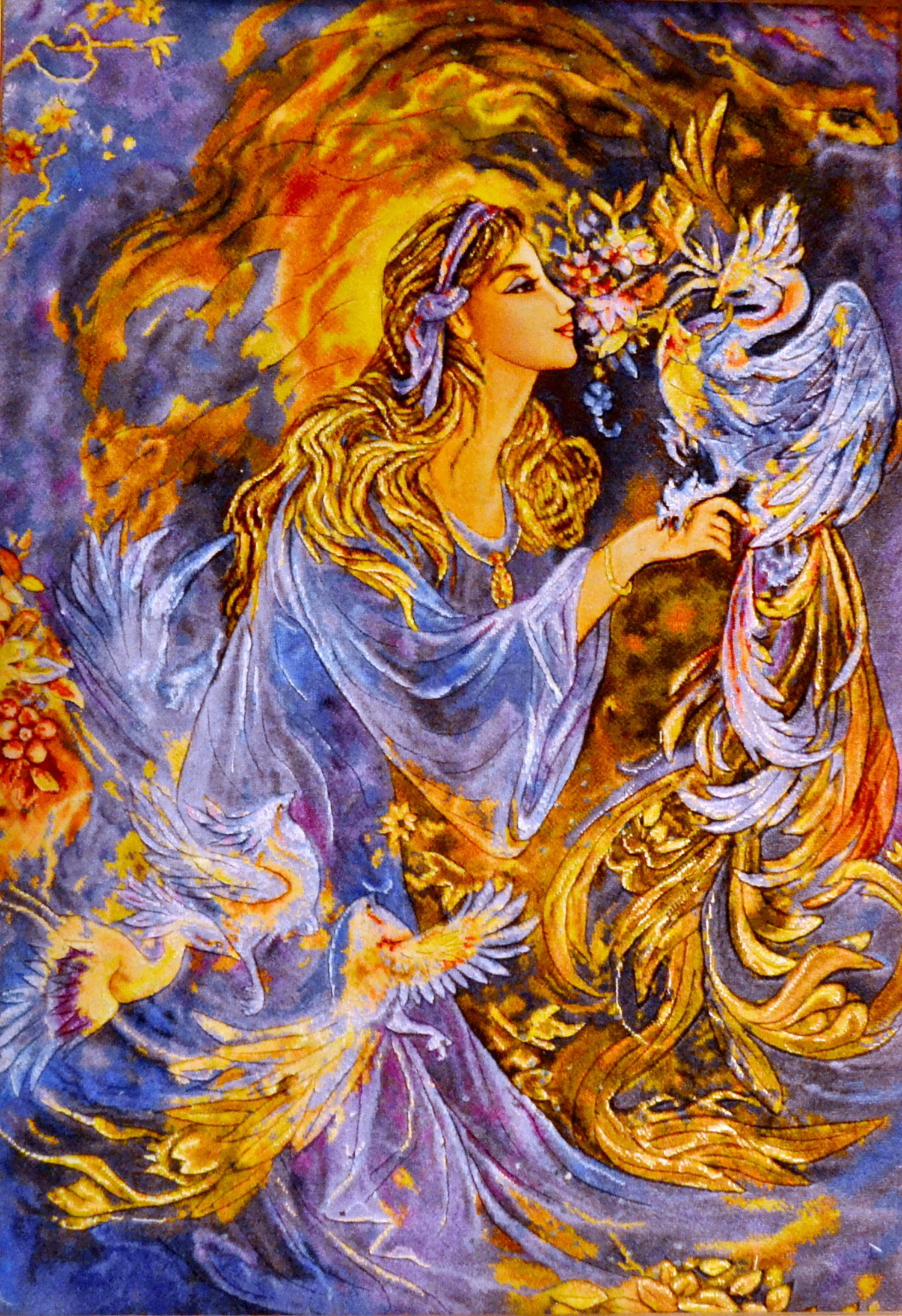
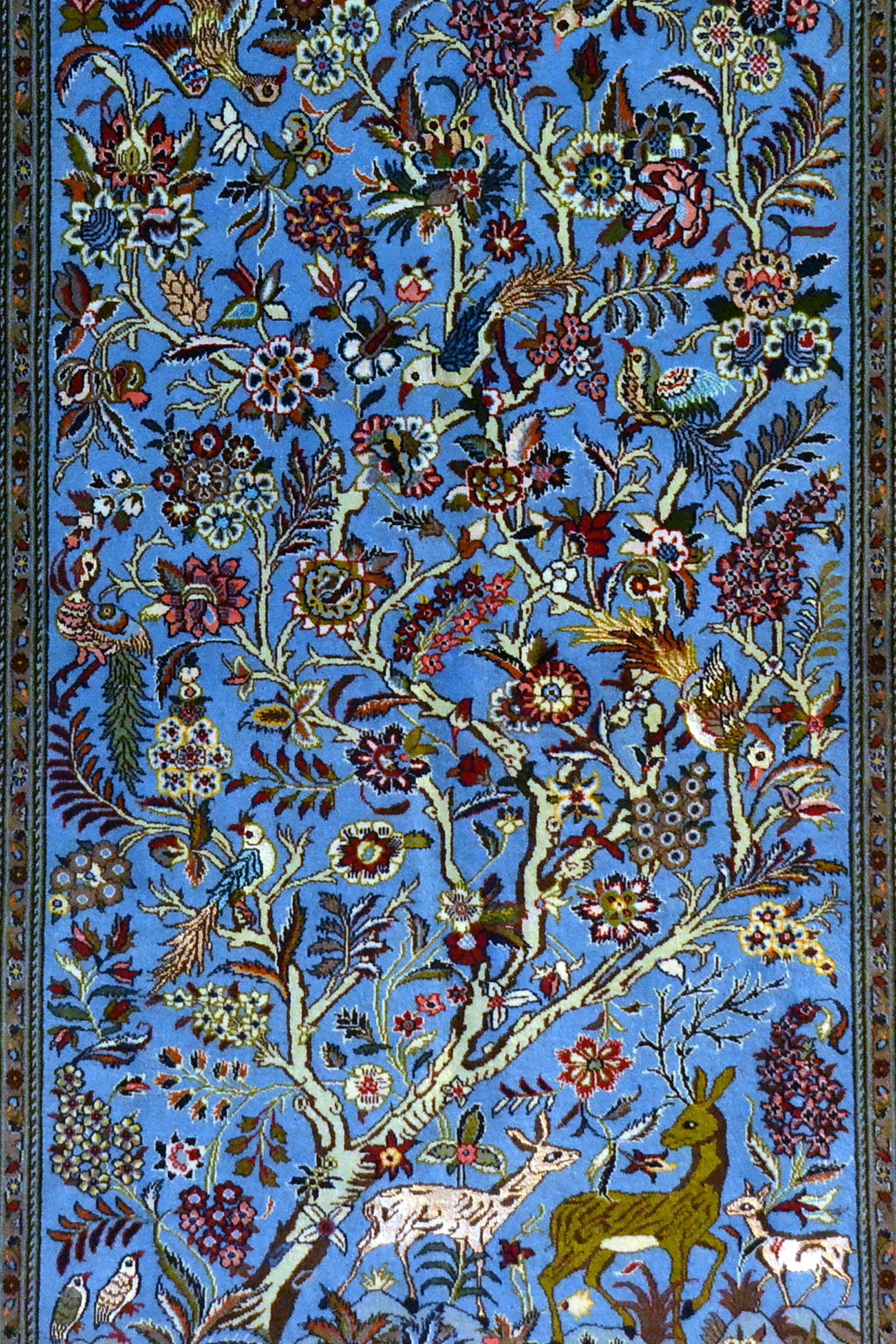
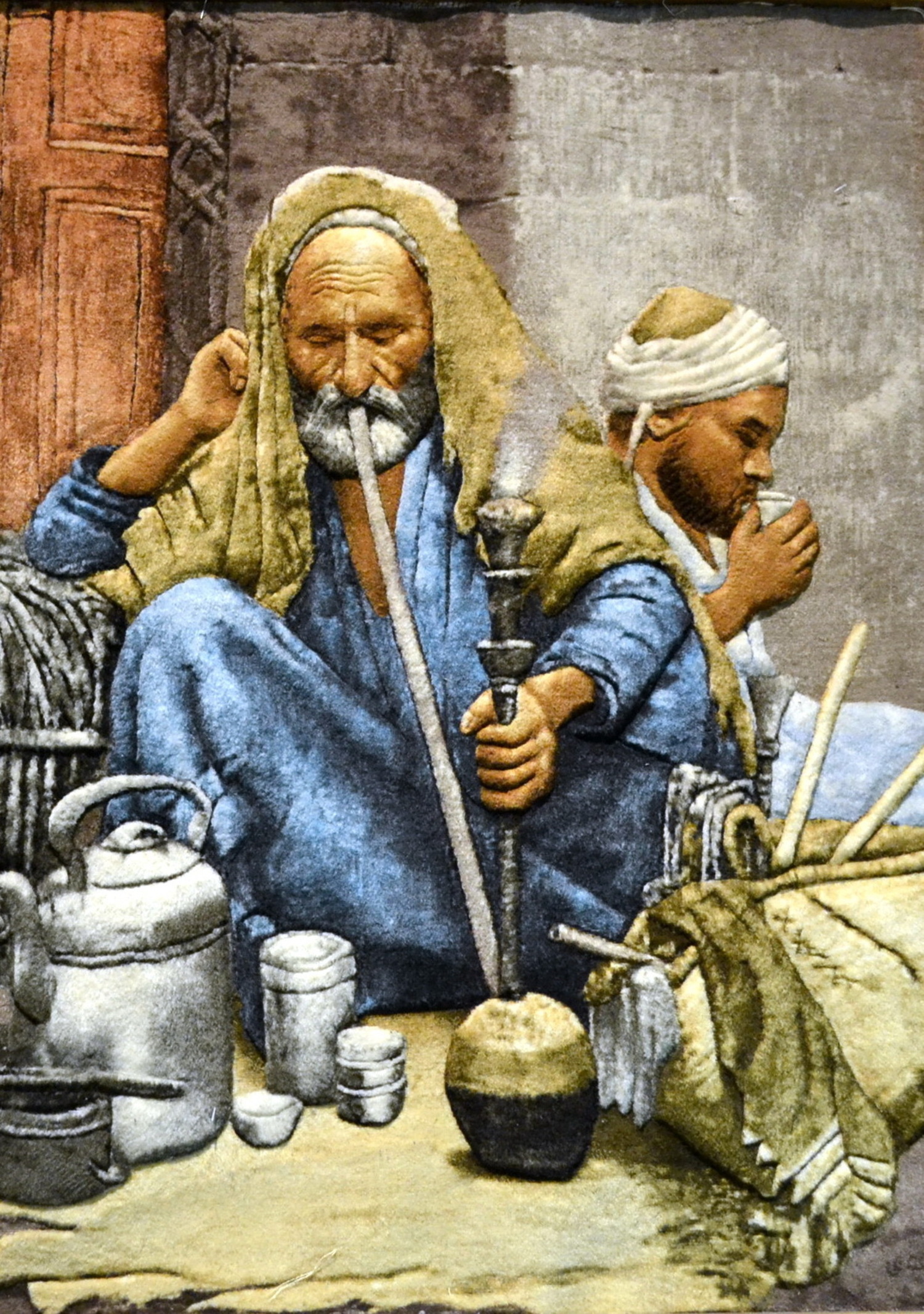
“Handiworks price is normaly high enough and they are getting more and more expensive as time goes on” –says Mr. Rafik, a carpet consultant and the representative of an old weaving dynasty. He is guiding me in the room
with hand-made woolen and silk carpets, which cost thousands of dollars.
In the room he is sitting down on the floor with crossed legs and I am following him. His assistant is spreading a small rug one by one and a half meter in size in front of us.
 © Victoria Lazareva, feelingthelife.com
© Victoria Lazareva, feelingthelife.com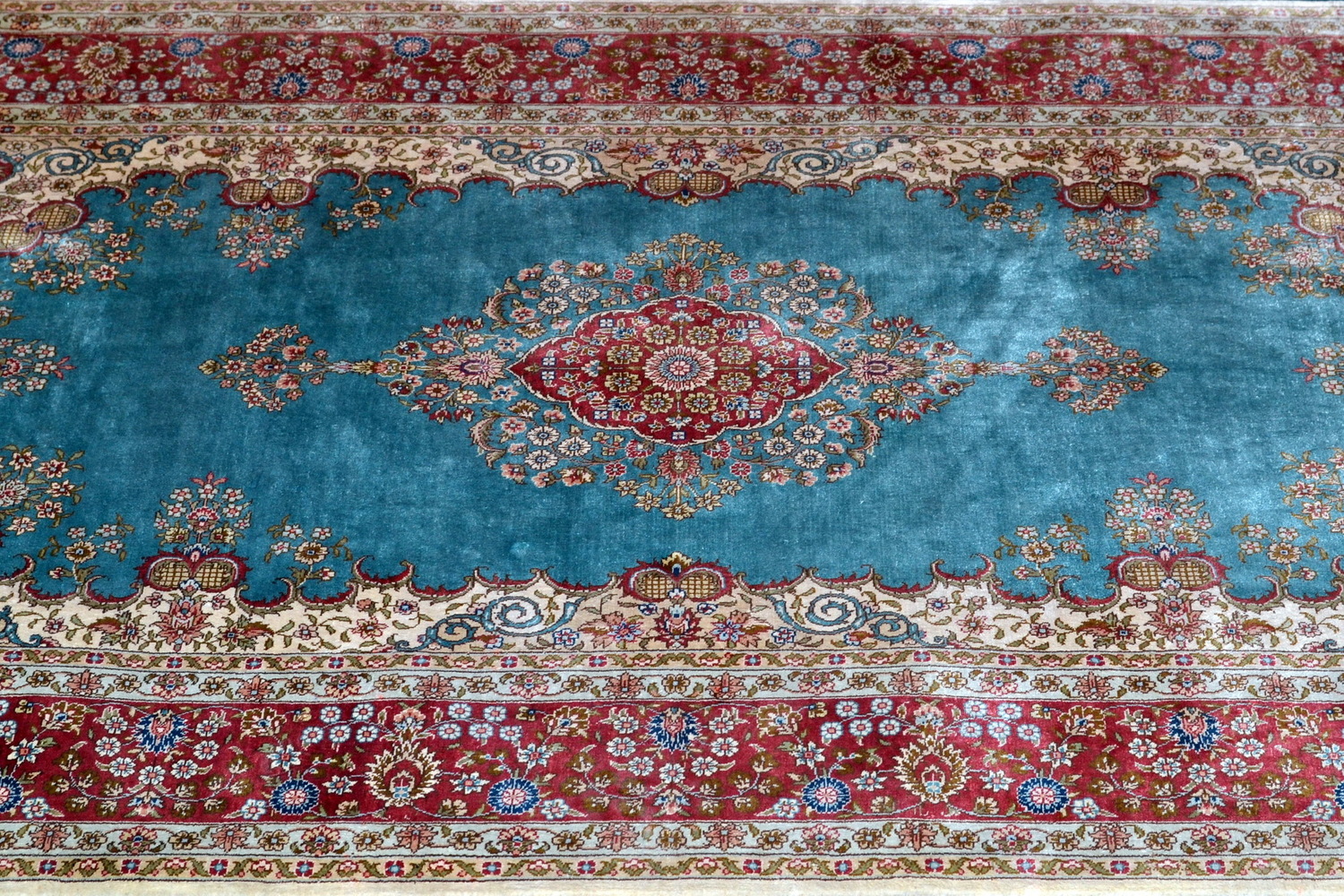 © Victoria Lazareva, feelingthelife.com
© Victoria Lazareva, feelingthelife.com
“Touch it!” – Mr. Rafik is suggesting. I am putting my hand on the rug. It is warm and as soft as a baby's bottom. My guess is right – it is made of silk. It is a silk rug with water twist.
“And now touch this one!” – the descendant from a renowned family of weavers is asking me to familiarize with another carpet spread in front of me. It feels even tender. It is soft and thin. –“Yes, because it is silk on the organzine”.
I am being explained that a real oriental carpet is specific weaving technologies which secrets are handed down from generation to generation. Pictures and patterns have been developing by centuries. Due to these pictures and patterns experts can easily define the city or the province this carpet has been woven and even the carpet-makers dynasty.
In the picture – silk and woolen hand-made carpets from Saga World Center collection, Dubai
- © Victoria Lazareva, feelingthelife.com
- © Victoria Lazareva, feelingthelife.com
- © Victoria Lazareva, feelingthelife.com
- © Victoria Lazareva, feelingthelife.com
 © Victoria Lazareva, feelingthelife.com
© Victoria Lazareva, feelingthelife.com- © Victoria Lazareva, feelingthelife.com
- © Victoria Lazareva, feelingthelife.com
- © Victoria Lazareva, feelingthelife.com
- © Victoria Lazareva, feelingthelife.com
- © Victoria Lazareva, feelingthelife.com
- © Victoria Lazareva, feelingthelife.com
Mr. Rafik is telling me about weaving culture in his family. He is Kashmir-born. Unlike other famous weaving areas of the world Indian weavers are mainly men. “My father kept on singing while weaving.
Remember him singing while matching the right yarn colours. He used to work without using any patterns or any ornamentation made-up. He had already had it in his head. He was just weaving his carpet striking the symmetry”.
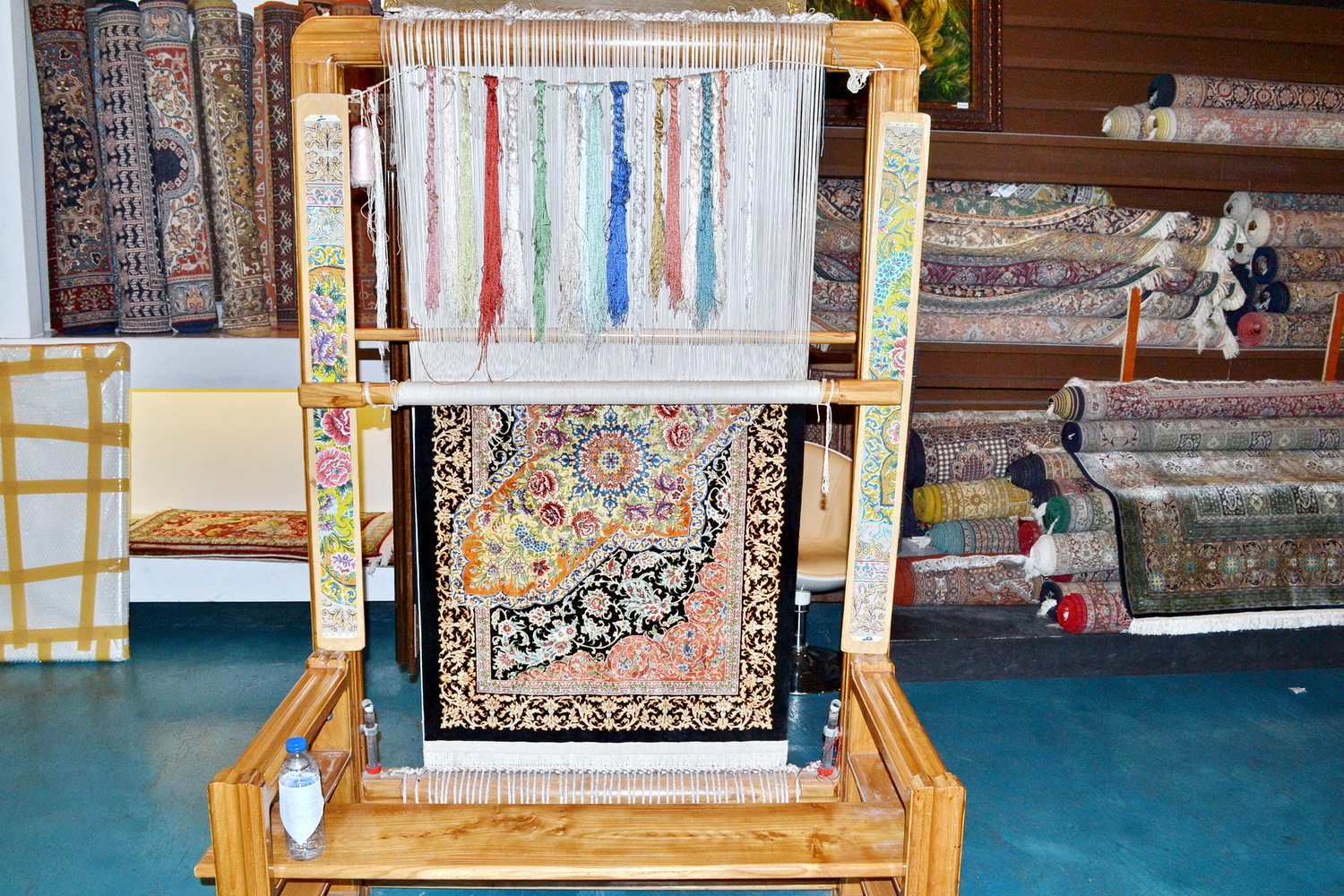 © Victoria Lazareva, feelingthelife.com
© Victoria Lazareva, feelingthelife.com
It is not surprising that every hand-made carpet contains emotional equities of those who were weaving them. By the way carpets can be woven for years. A silk yarn is the most difficult to work with: it took a weaver a year and a half to make the rug spread in front of me!
Large silk and woolen carpets can be woven two-three or more years and not only by one weaver but by a team of two or more people. To keep their eyesight they have a break every hour.
It can take you an hour or two to feel particularly “your” carpet while gunning. Shop-assistants will understand you and will treat you with respect. Please feel free to ask the owner to show you all carpets and rugs he has, touch them, check the right and the wrong sides, feel the poetry of beauty, ornamentation complexity and weaving skills.
 © Victoria Lazareva, feelingthelife.com
© Victoria Lazareva, feelingthelife.com
The way to distinguish hand-made carpets from manufactured ones
First of all you should depicture the way carpets are woven. You are supposed to know there are
Lengthwise yarns (cotton or silk, rarer woolen ones) held tight on a special frame – it is going to be a carpet backing. And there are wefts (silk, woolen or cotton ones) - they will be made a carpet pattern from.
A hand-made carpet is woven by knots. A weft of a particular colour doubly circles two lengthwise yarns by the figure-of-eight, goes to the right side and is cut off - and we’ve got a carpet hair. Then the next weft: double figure-of-eight around the carpet backing going to the right side and cut off - one more hair…
The most experienced weavers make 5000-6000 knots a day. One large carpet (two by three meters) contains more than 600 thousand knots under 10 knots per one square centimeter to 6 million under 100 knots per one square sm.
The more knots the more durable the carpet is.
- © Victoria Lazareva, feelingthelife.com
- © Victoria Lazareva, feelingthelife.com
Having woven a whole carpet row, a weaver takes special carpet scissors to prune all row hairs to one size. Then goes the next row followed by the next one and so on.
It is a very meticulous work involving a lot of attention and patience. It results in a high-thread-count carpet with thick and equal-size hair.
Woolen carpet surface reflects light and looks equally smooth from all sides.
But silk surface carpets (in the picture) depending on the angle you look at it, day time and lighting get new delicate gradation and look a little bit different. Colours can show day and night shades creating an illusion of two carpets instead of one.
- © Victoria Lazareva, feelingthelife.com
- © Victoria Lazareva, feelingthelife.com
And one more time about carpet thickness. It is defined by the number of knots per one square centimeter. The thicker the carpet the more pronounced the pattern is (it is like picture pixels).
Working with thin silk yarns there are more knots so silk carpets pattern is sharper. Woolen yarn is thicker and woolen carpet has a little less knots. It influences woolen carpets pattern – it is a little fuzzy.
- © Victoria Lazareva, feelingthelife.com
- © Victoria Lazareva, feelingthelife.com
- © Victoria Lazareva, feelingthelife.com
The wrong side of a hand-made carpet is equal to the right side in colour brightness. By the wrong side you are able to see every knot and appreciate weaving skills.
You can also run your nail on the carpet wrong side – in a carpet of a good quality knots are dovetail and the possibility of a chape is shut out.
- © Victoria Lazareva, feelingthelife.com
- © Victoria Lazareva, feelingthelife.com
- © Victoria Lazareva, feelingthelife.com
- © Victoria Lazareva, feelingthelife.com
Mister Rafik, the weaver, is making our experiment more difficult – he is taking scissors and starts scratching the wrong side of the carpet with them imitating dog claws. This act of vandalism is hard to see.
Meanwhile our silk carpet is surviving a kind of crash test.
It’s all about the weaving: due to the fact that every knot of a hand-made carpet is not connected with the others it means in case of one knot damage, the rest ones will be safe. In manufactured carpets in case of a yarn damage a run can develop along the whole row. And, please, pay attention – manufactured carpets wrong side is pale, flat as if the pattern was badly printed.
When a hand-made carpet is completed it is taken off the frame. There are lengthwise yarns of the warp left - it is neither more nor less than a carpet fringe. *Manufactured carpets do not have such fringe because it is just sewed down imitating warp yarns.
In the picture- a fragment of a silk hand-made carpet (silk on silk).
- © Victoria Lazareva, feelingthelife.com
Then this hand-made carpet is sewed around by hand for beauty and strength. *Manufactured carpets just have cross stitches around the periphery.
If you fold a hand-made carpet perpendicular to the fringe (warp yarns) you will be able to see a row with tough knots.
*In manufactured carpets hairs are sewed to the warp with one line.
A ready-made carpet is washed, dried, brushed and trimmed *Manufactured carpets have hair length made automatically.
- © Victoria Lazareva, feelingthelife.com
Did you know
There are not so many carpet weaving regions in the world. For centuries Persia (modern Iran) had been occupying the first place. There are more than one hundred silk and woolen carpet weaving regions. Persian carpets have already become a common name meaning carpets high quality benchmark. These carpets differ by their gorgeousness, magnificence, variety of forms and patterns. Due to natural colouring matters Persian carpets have noble and a little muted colouring.
India has been famous for its carpet weaving since the 16th century since Abu'l-Fath Jalal ud-din Muhammad Akbar, known as Akbar I times. Carpet weavers came here from Persia. Nowadays there are three most famous carpet weaving regions producing hand-made carpets in India: Agra, Jaipur and Kashmir. Kashmir produces mainly silk carpets. Apart from Iran and India there other countries famous for their ancient weaving traditions. They are Turkmenistan, Afghanistan, Turkey, Azerbaijan, some regions of Russian Caucasus including Dagestan. Chinese provinces are standalone.
- © Victoria Lazareva, feelingthelife.com
An antique carpet, Miraj International, Abu Dhabi
